SBA Business Plan Template: Full Guide [2024]
- August 7, 2024

In 2020, SBA’s flagship 7(a) loan program approved more than 42,000 loans totalling $22 billion . Yet, SBA loans are notoriously difficult to obtain for small businesses: less than 15% of SBA loan applications were granted by big banks. If you’re applying for a SBA loan , you will need a solid business plan template for your loan application.
In this article we go through, step-by-step, all the different sections you need in your business plan to build a complete, clear and solid business plan lenders will approve. Read on!

Why do you need a business plan for your SBA loan application?
Other than your basic eligibility requirements, the primary element that lenders would review is your business plan. Having a good business plan determines if your business is a lucrative opportunity for SBA lenders.
Also, a solid business plan makes it easier to get your loans approved because banks would be confident that your business would be successful and you would be able to repay your loan.
However, business plans tend to differ depending on the nature and status of your business. If you’re running an independent business or launching a startup for example, your business plan will be reviewed more thoroughly.
1. Executive summary
The executive summary is the most important page of your SBA business plan template . We can’t make this clearer. This is the first section that the lenders will have a look at.
Before we go into specifics, keep in mind the executive summary actually is a summary. Keep it brief: your executive summary should never be more than 2 pages maximum .
Your executive summary should consists of 5 parts:
- The “mission statement “: what problem(s) is your business solving?
- Product and service : what is it that you sell? to whom? where?
- People : who are the founders / management? What about their experience? How many people / teams do you employ?
- Key financials and projections : what are your key metrics and financials today (revenues, customers, etc.)? What do you expect these to be in 3/5 years from now?
- Funding ask : what (how much) are you asking as part of this loan? Where will you spend it? For what?
2. Company description
The company description is where we go into more details about your business, and which problem(s) it actually solves.
You should explain here clearly:
What is the problem at stake?
You should list here the 2/3 friction points you aim to tackle.
Remember: even if your business isn’t necessarily innovative, your business is potentially solving a problem, as obvious as it may be, for many people out there. The more obvious the problem is, the more people it affects, the better
What is your solution?
Your business is commercialising a product and/or a service which solves the problem mentioned above. Here, you should explain 2 things: how your product / service works, and what benefits it brings to your customers.
Ideally, you should compare the pain points explained earlier (the problem) to the benefits your solution brings to your customers. That way, it is crystal clear to lenders and investors your solution really adds value to potential customers .
When explaining your business’ solution, you should explain clearly who is your customer persona . In other words, who are your customers (or who do you think they will be)? Which gender, age range, social background, interests, etc?
Where are you going?
The third section of the company description should explain what your strategy is in the short to long term. Are you expecting to launch new products? To expand regionally, internationally? Etc.
3. Market plan and analysis
The market plan and analysis section tell investors and lenders that you have extensively studied the market and reveal your competitive plan.
Your market plan and analysis section should include the following:
Industry overview and outlook
Here you need to clearly identify 2 very important metrics:
- Market size : how big is your market?
- Market growth: how fast does your market grow?
If you are operating in a niche market, chances are that you will face some challenges: the information might not be publicly available. In any case, you should be able to make a high-level estimation of your market. Read our article on market sizing and how to estimate TAM, SAM and SOM for your startup .
When looking for these metrics, you have multiple sources of information: public reports, specialised press, etc. Even public companies publish press releases and annual reports including some of their proprietary market estimates so be sure to look there too.
Competitive landscape
Here we must answer 2 key questions:
How fragmented is your market?
Are there 3 big players sharing 90% market share or thousands of small players? Here, refer to public market reports and your own understanding of the competitive landscape .
A few questions you could ask yourself, among others:
- Who are your competitors?
- Are they local, regional, national or global?
- Are there any product alternatives to your product?
- What about their IP / technological advantage?
Where do you position yourself vs. competition?
Is your solution a game changer other competitors don’t have (yet)? Do you have competitors with similar products/services?
Ideally, you would create a small table with, for each type of competitors and their main characteristics.
For instance, do they all a global presence? Do they cover all the products you offer? What is their relative price positioning (expensive vs. accessible)?
4. Organization and management
The amount of details you need to include here varies depending on the size of your company.
No matter how many leadership roles there are, an organizational chart effectively shows lenders and investors how the management system is structured.
If you plan on running your business alone indefinitely, you can write a short paragraph explaining your qualifications and previous professional experiences.
The first thing you should include in this section is a list of each management position. This list includes who will fill the role and the qualifications of these people. These people are the heart of your company, and their skills and experience are vital in ensuring your company’s success.
Next, provide any additional information about how the management team will contribute to the business’s success. Be sure to give as many details as possible since lenders need to be comfortable and confident that you have a good team running your business.
Lastly, include information about the Board of Directors (and/or any other advisors to your business).
5. Service or product line
The level of detail and the content of this section changes depending on the type of business you have. A number of questions you need to answer are shown below (but not limited to):
- Are you selling products or services (or both)?
- How many products do you sell?
- What are they?
- What is their pricing?
- How do they work?
- Are your products protected by any kind of intellectual property (copyright, patent, etc.)?
- If you do not manufacture all of your product(s): who are they suppliers? Where do they fit in the value chain ? etc.

Tech startup financial model templates
Download an expert-built 5-year Excel financial model for your business plan
6. Marketing and sales
Your SBA business plan template should include a marketing and sales plan where you describe your strategy for acquiring potential clients.
Here, you should give details about your marketing plan. A few questions you should answer are:
- How you plan to build and support your sales strategy ?
- What channel(s) are you using (online vs. offline)?
- How it makes sense for your target audience (the customer persona mentioned above)?
What about your metrics?
Sales and marketing goals and KPIs are also provided in this section. Don’t forget to include a detailed report about budgets for both sales and marketing.
Include metrics such as conversion rate, customer acquisition cost (CAC) , the efficiency of your sales team, etc.
It’s ok if you don’t know them already (if you are about to launch you new venture for example), yet you should have at least targets for them. How many website visitors do you expect to generate next year? What is your target conversion rate? Etc.
This particular report would be of great interest to lenders since they will glimpse how you handle your budget. Indeed, if you expect to spend in average $100 Customer Acquisition Cost, lenders will tie the number into your financial projections later on (more on that below).
Proving lenders you are able to link your financial projections with your actual business metrics (customers, sales volume, etc.) is a big plus . Indeed, that way you will show lenders you understand very clearly your business and how it ties into your financials (more on that in our article on why you should build a solid financial projections ).
7. Funding request
The funding request is the section of your SBA business plan template where you communicate to your investors how much you need.
This report also includes how you plan on repaying your loan. It’s also essential to explain how you plan to spend the funding you’ll receive for your business.
Will you spend the loan in working capital , in equipment, in inventory, salaries or marketing costs? The more specific you are, the better.
If you haven’t done so, we really recommend you read our article on how to determine how much you should raise for you business . While raising too little creates obvious problems, raising too much isn’t necessarily better.
On top of the amount, a good practice is to include a pie chart of where you will spend that money over a given period (your runway). Will you spend the bulk of it in product development to build your MVP? Or will you use a large portion in sales & marketing to commercialise your product and find product-market fit?
Our financial model templates include a cash burn dashboard where you can easily assess how much you should raise, and where you will spend your money. We also included charts ready to be included in your pitch deck. See how to use our cash burn dashboard here .
The funding request usually includes an overview of the business. You also have to outline how much funding you need for the next five years. The standard timeframe for repaying your loan is usually ten years, so lenders expect to see some success in your business by that time. Mention a detailed explanation of how the funds will be used and strategic financial plans for the future here. Include financial information for current operations if applicable.
8. Financial projections
The financial projections section of your SBA business plan is one of the most important one.
Why? Lenders will have a thorough review of your expected financials over the next 3 to 5 years and judge whether your financial projections:
Are realistic (and use verifiable assumptions)
We are all by nature optimistic, especially when we are running businesses. It’s good to be optimistic, yet it is another one to be unrealistic.
Also, when presenting your financial projections, make sure to make it clear what are your assumptions. The more sources you can find to back up your forecasts, the better.
If you need help building realistic projections for your business, we have lots of free content. Make sure to check out our guides below:
- The 5 Mistakes To Avoid For Your Startup Financial Plan
- How To Build Realistic Revenue Projections For Your Startup?
Allow you to repay the SBA loan in the future
It’s great if you have built rock-solid and realistic financial projections for your business plan. Yet, if your plan doesn’t allow you to meet your debt obligations (the SBA loan and any other debt your business might have), lenders will not grant you any loan.
When assessing whether your financial plan allows you to repay the debt, you should check if the positive cash flows your business generates are enough to cover your debt repayment (and interests).
What financials should you include?
In short, you should present 3 different set of financials:
- Profit-and-loss
- Balance sheet
- Cash flow statement
If you don’t know them already, these are the financial statements every business need to prepare at least annually (with the help of an accountant). For more information on what they are and how to prepare them, read our articles below:
- 4 Key Financial Statements For Your Startup Business Plan
- SBA Loan Application: 6 Steps To Build Solid Financial Projections
9. Appendix
This section is the best place to add supporting documents like charts, graphs, and data.
For example, a complete list of documents like licenses, contracts, maps, etc. makes you more attractive to lenders as it gives them more content to review. If you do so, make sure to reference the documents in appendix and link them to pages in earlier sections. Avoid using the appendix as a dump section: it should be well organised and structured (else no one will bother looking at it).
Related Posts

Sit Still Franchise FDD, Profits, Costs & Fees (2025)
- December 4, 2024

Tapville Social Franchise FDD, Profits & Costs (2025)

Crisp & Green Franchise FDD, Profits & Costs (2025)
Privacy overview.
Financing | Templates
How to Write an SBA Business Plan [+Free Template]
Published July 18, 2024
Published Jul 18, 2024
REVIEWED BY: Tricia Jones
WRITTEN BY: Andrew Wan
This article is part of a larger series on Business Financing .
- 1. Write Company Description
- 2. Identify Organizational Structure & Management
- 3. Outline Market Analysis
- 4. Describe Products/Services
- 5. Describe Marketing & Sales Strategies
- 6. Provide Financial Data & Projections
- 7. Detail Your Financing Request
- 8. Complete Appendix & Supplemental Data
- 9. Write the Executive Summary
- Additional Resources
Bottom Line
FILE TO DOWNLOAD OR INTEGRATE
SBA Business Plan Template Download
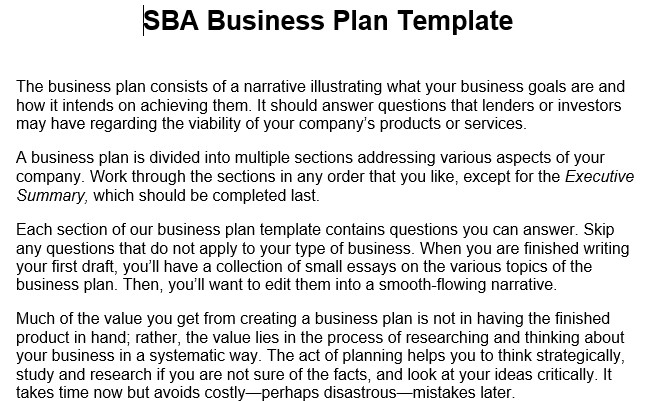
Thank you for downloading!
If you are applying for a loan through the Small Business Administration (SBA), a business plan will likely be a required component of your loan application. Your SBA business plan should provide an overview of your company’s goals and how it plans to achieve them.
There is no standard format for an SBA business plan, but it should contain enough information that a potential investor or lender can make an informed decision as to the likelihood of your company’s continued success. We recommend using our SBA business plan template above to ensure you cover the most critical components.
Step 1: Write a Description of Your Company
This section of your SBA business plan should address your company’s purpose, its goals, and how they’ll be met. Provide background information to describe why your company exists, any problem or challenge it aims to solve, and how customers can benefit from its products or services.
A strong company description should also address the following questions:
- What prompted you to start your business?
- What organizations or individuals will benefit from your company’s product or service?
- What makes your company different from others?
- What competitive advantages does your business offer?
- What would a successful product launch look like?
- Does your company have strategic partnerships with other vendors?
Step 2: Identify Organizational Structure & Management
Your SBA business plan should outline how your company is organized from both a tax and legal structure. Including an organizational chart can help show the individuals responsible for different areas of your business. You can also include information about the background of key members of your leadership team.
Consider also addressing the following items:
- Highlight what business structure you have selected and why. Examples commonly include a sole proprietorship, limited liability company (LLC), partnership, S Corporation (S-corp), and C Corporation (C-corp).
- Detail any potential legal protections or tax savings you expect based on the tax structure you’ve chosen.
- Include resumes for members of your leadership team highlighting their experience and how it’s relevant to the goals of the organization.
Step 3: Outline Your Market Analysis
The market analysis section of your SBA business plan should look at who your competitors will be. Observe what they are doing well, their weaknesses, and how your company compares. Insights from this evaluation can provide a good foundation for identifying opportunities and consumer needs that aren’t currently being met.
The SBA’s market analysis page contains information on how you can approach this. Questions you should also consider addressing should include the following:
- Who are the major competitors in the market?
- What are competitors doing well, and are there areas for improvement?
- How does your company compare to the top competitors?
- How has the product or service evolved over time?
- Are there any trends for supply and demand throughout the year?
- What can your company do to stand apart from the top competitors?
- Are existing customers satisfied with the current offering of products and services?
Step 4: Write Descriptions of Your Products & Services
In this section, you should detail the products or services your business offers. You should explain what it does, how it helps your customers, and its expected lifecycle. Include things like any expected research and development costs, intellectual property concerns (e.g., patents), what the lifecycle of your product looks like, and what is needed to manufacture or assemble it.
Here are some things to consider as you are working on this section:
- Description of what your product or service does
- How your product or service works
- How your customers will benefit from your product or service
- Illustration of the typical lifecycle
- Any patents or intellectual property you or your competitors have
- Pricing structure
- Plans for research and development
- Discuss plans for handling intellectual property, copyright, and patent filings
Step 5: Describe Your Marketing & Sales Strategies
Details of your marketing and sales strategy will be highly dependent on your business. It’s also something that may evolve and change over time in response to things like the overall economic environment, release of competitor’s products or services, and changes in pricing.
With that being said, here is a list of some items that should be addressed:
- Who is your target audience?
- How will you attract customers?
- How and where will sales be made?
- If applicable, what will the sales process look like?
- Where will you market and advertise your product or service?
- How does your marketing strategy compare to other companies in the industry?
- How much should you spend on marketing?
- What is the expected return on investment for marketing?
- Do you have any data showing the effect of marketing?
Step 6: Provide Financial Data & Projections
If your business has been operational, you should include information about its finances. This should consist of all streams of revenue and expenses. Data for financial projections should also be included, along with a description of the methodology you used to reach those conclusions.
If available, you should be prepared to provide the following financial documents for at least the last three years to five years:
- Personal and business tax returns
- Balance sheets
- Profit and loss statements
- Cash flow statements
- Hard and soft collateral owned by your business
- Business bank statements for the last 6 to 12 months
Financial projections should include enough data to offer some confidence that your business is viable and will succeed. It’s recommended that you provide monthly projections looking forward at least three years, with annual projections for years four and five.
- Projections for revenue and methodology used in arriving at these figures
- Expected shifts in revenue or expenses as a result of seasonality or other factors affecting supply and demand
- Expected expenses from loan payments, rent, lease payments, marketing and advertising fees, employee salaries, benefits, legal fees, warranty expenses, and more
Step 7: Detail Your Financing Request
This section is where you should specify how much funding you need, why you need it, what you’ll use it for, and the impact you expect it will have on your business. It’s also a good idea to indicate when you expect to use the funds over the course of the next three to five years.
Here is a checklist of some important items you should cover:
- How much funding you need and why
- When you will use the funds over the next three to five years
- What you will use the funds for
- The expected impact this will have on your business and how it will help reach your business goals
- The anticipation of any recurring needs for additional funding
- Your strategy for how you expect to pay off the loan
- Any future financial plans for your business
Step 8: Fill in the Appendix & Supplemental Information
This last section of your SBA business plan should include any additional information that may be helpful for lenders. This can include more detailed explanations or clarifications of data from other sections of your business plan.
Here are some examples of documents you can include:
- Business licenses
- Certifications or permits
- Letters of reference
- Photos of products
- Resumes of business owners
- Contractual agreements and other legal documents
Step 9: Complete the Executive Summary
The executive summary, which is the first section of a business plan, should be no more than one to two pages long and should provide a high-level overview of the items listed below. Since each section above is already detailed, a brief description of those sections will be sufficient.
- Your company’s mission statement
- The background and experience of your leadership team
- The product or service and what purpose it serves
- Your target market for the product or service
- Competitive analysis of other products and services
- Your competitive advantage or why your company will succeed
- Marketing and sales strategy
- Financial projections and funding needs
Additional Resources for Writing an SBA Business Plan
If you’re looking for additional resources to help you write a business plan, you can consider the options below. Since a business plan is just one of many documents you’ll need, you can also read our guide on how to get an SBA loan if you need help with other areas of the loan process.
- SBA: SBA’s business guide contains information on how you can start a small business. It includes steps on creating a business plan, funding your company, and launching a business.
- SCORE: Through SCORE.org , you can request to be paired with a mentor and receive business-related education. Educational courses come in several formats, including webinars, live events, and online courses.
- Small business development center (SBDC): SBDCs provide training and counseling to small business owners. This can help with various aspects of your company, such as getting access to working capital, business planning, and financial management. Use the SBA’s tool to find your closest SBDC .
Frequently Asked Questions (FAQs)
If i already have a business plan, should i update it before applying for an sba loan.
If your business plan is up-to-date, you may be able to reuse it for your SBA loan application. In general, you should consider updating your business plan each year or once any major changes have taken place to ensure that investors and lenders have the most updated information.
How long should my business plan be?
A general rule of thumb is to have a business plan anywhere from 15 to 50 pages. However, this can vary from company to company, and we recommend focusing instead on ensuring it covers all of the necessary details for the various sections. Find the right balance between thoroughness and conciseness, as providing too many details can lead to lenders or investors glossing over important data.
Why do I need a business plan for an SBA loan?
A business plan helps a lender determine whether your company is likely to succeed. This, in turn, allows it to determine whether or not you can repay loan proceeds, as well as the interest rate that you qualify for, based on its overall risk assessment.
Having a strong SBA business plan can improve your chances of getting approved for an SBA loan. If you’re unsure where to start, you can use our guide and template to cover the most important aspects of your business. You can also see our tips on how to get a small business loan . To get even more ideas on creating a strong business plan, you can also use resources through organizations such as SCORE and the SBA itself.
About the Author

Find Andrew On LinkedIn
Andrew Wan is a staff writer at Fit Small Business, specializing in Small Business Finance. He has over a decade of experience in mortgage lending, having held roles as a loan officer, processor, and underwriter. He is experienced with various types of mortgage loans, including Federal Housing Administration government mortgages as a Direct Endorsement (DE) underwriter. Andrew received an M.B.A. from the University of California at Irvine, a Master of Studies in Law from the University of Southern California, and holds a California real estate broker license.
Join Fit Small Business
Sign up to receive more well-researched small business articles and topics in your inbox, personalized for you. Select the newsletters you’re interested in below.
- 425-289-3200

How to Write a SBA Loan Business Plan
A business plan is a crucial piece of any SBA loan application. It’s what lenders will look at most closely when approving a loan, so it should be organized, well planned and persuasive. Set yourself up for success by learning how business plans impact loan approval and which critical elements to include.
What is a business plan?
Many entrepreneurs talk about their business plan — whether it’s stored only in their minds or scratched on napkin — but truly savvy business owners take the to time author a well-written one. So what exactly is a business plan?
A business plan is a living document (meaning it can and should be updated as your business progresses) with a three- to five-year outlook into your business. It should provide an overall summary of where the business is headed, plans for growth and projected revenue. Business plans take time, research and due diligence, but the reward is organized and actionable steps to grow your business. In fact, companies with a formal written business plan see a 30 percent increase in growth compared to those that don’t.
How does a business plan help you get an SBA loan?
Outside of your basic eligibility requirements ( see Chapter 2 for the 5 C’s ), your business plan is the top element lenders will review to determine your attractiveness as a borrower. Having a solid business plan with clear ideas makes it easier it is for banks to see that your business will be successful, and therefore that you’ll be able to repay the loan. However, business plans are not a one-size-fits-all endeavor. If you’re running an independent business or launching a start-up, the importance of your business plan carries additional weight and will be more carefully scrutinized. If you’re funding the purchase of a franchise, the competitive analysis and management sections will be more closely reviewed than others because the business model has already proven successful.
Writing a business plan can sound intimidating, but even a thorough plan only needs to be seven to ten pages. Check out our free eBook and business plan template to help guide you through the process, and keep reading for an overview of each section of the business plan.
The 10 Elements of a Business Plan
Whether you’re writing a business plan as a part of your SBA loan application package or not, there are 10 essential elements to include. Here’s a look at what those sections are as well what’s included in a complete plan.
Cover Page and Table of Contents
The cover page and table of contents of your business plan is a great way to show your lenders that you’re a professional and organized businessperson. These pages should be simple and straightforward, but you can (and should) make them your own by including your company’s logo.
What’s included in the cover page and table of contents?
- The business’s name and logo.
- Your contact information as the owner.
- A standard table of contents with page numbers.
Executive Summary
As the first thing that lenders will read in your business plan, the executive summary is the most important section. Here, you will introduce yourself to potential lenders or investors, so the overall tone should be professional, but it should also paint a positive picture about the business.
What’s included in the executive summary?
- An overview of the business idea, what problem it solves for consumers and how it fits into the market.
- How much the business will cost and how much funding you’re seeking.
- Plans for growth and why the business will be successful.
- Information about your business background.
Company Description
The company description is a closer look at how the business will function. This information is a good opportunity to show lenders you’ve thought through the day-to-day details and have a solid strategy in place. Consider the company description your extended elevator pitch.
What’s included in the company description?
- Your company’s name, mission and vision.
- An explanation of the business structure, including products sold or services provided.
- Any information regarding strategic partnerships.
- Business location and when it will open.
- Business goals and competitive advantages.
Market Plan and Analysis
The market analysis section should show readers your deep understanding of the market and your plan to be competitive. Those looking to fund a franchise should give this section extra attention, as lenders will be reviewing this information closely. This is also great space to use visuals to help support your story.
What’s included in the market plan and analysis?
- An industry overview and outlook, including trends, size and expected growth.
- Target market demographics and market research data.
- A marketing plan tailored to the audience you’ve identified.
- Competitive analysis.
Organization and Management
Depending on the size of your business, the amount of detail in the management section can vary greatly. Even if there are only a few people in leadership roles, an organizational chart is an effective way to show lenders how the management team will be structured. If you are your only employee (and plan to remain so), you can write a short paragraph explaining this as well as your qualifications.
What’s included in the organization and management section?
- A list of each management position including who will fill the role and their qualifications.
- Any additional information about how the management team will contribute to the success of the business.
- Information about the Board of Directors.
Service or Product
When describing your service or product in your business plan, it’s important to emphasize how your particular offering will meet a need for your target market. Try to think beyond providing a general description of what your company is selling and focus on how your company provides value to your customers.
What’s included in the service or product section?
- A detailed description of your product or service.
- Pricing details.
- Product research and development
- Intellectual property rights.
- An overview of the sales process and order fulfillment.
Marketing and Sales
The marketing and sales information in your business plan is all about how you’re going to connect with customers. Whether your strategy is to focus on advertising or inbound marketing, you should detail your plan here and explain why it makes sense for your target audience. You should also discuss how you plan to build and support your sales strategy.
What’s included in the sales and marketing section?
- Detailed marketing plan geared toward your target audience.
- Sales and marketing goals and KPIs.
- Budgets for both sales and marketing.
- A training plan for your sales team (if applicable).
- Revisit your pricing strategy.
Funding Request
Your funding request is an opportunity to tell lenders how SBA funding will help your business, as well as how your business will successfully repay the loan. Here, you should explain why you’re asking for small business financing as well as an overview of how the funds will be used.
What’s included in the funding request?
- An overview of your business.
- Financial information for current operations (if applicable).
- An outline of how much funding you need now and in the near future (up to five years).
- Detailed explanation of how the funds will be used.
- Strategic financial plans for the future.
Financial Projections
The information in the financial projections section of your business plan should cover three years of forecasted financial information. Keep in mind, you’re showing lenders how your business will perform by providing profit and loss, balance sheet and cash flow details. Remember, your business plan is a living document, so for your own benefit, you should continue to update this information even after funding.
What’s included in the financial projections section?
- Financial statements.
- An expenses budget, including both fixed and variable costs.
- A break-even analysis.
- A sales forecast for each service or product line.
- Historical financial data (if you own or are purchasing an existing business).
The appendix is the final section of your business plan, and is the best place to add any supporting documents. For example, if you had multiple pages of data to support your market analysis, you can include them here. You should reference which documents are in the appendix in earlier sections so lenders know where to find additional information.
What’s included in the appendix?
- Charts, graphs and data to support the information provided in earlier sections.
- Licenses and contracts with vendors or partners.
- Building permits.
- Resumes and professional certificates.
- Credit history.
Creating a written business plan may seem like an arduous task, but it’s a crucial step to obtain SBA financing. This living document can also help to guide you once you’re in business — keeping you on track, helping you to see what’s working and possibly what’s not. Taking the time to write a business plan now will help you find success down the road.
Pre-Qualify Today!

Jump to Chapter

Fund Your Business
- 401(k) Business Financing
- SBA Business Loans
- Unsecured Loans
- Portfolio Loans
- Comparison Chart
Value A Business
- Business Valuations
- Certified Appraisals
Learning Center
- Business Calculators
- Client Success Stories
- Editorial Guidelines
- Guidant Newsletter
Small Business Trends
- 2024 State of Small Business
- Entrepreneurs of Color
- Franchise Trends
- Women in Business
Additional Resources
- Client Sign In
Complete Guides
- 401(k) Business Financing: ROBS
- Funding Options for Small Businesses
- Buying A Franchise
- Become a Small Business Owner
- Selling Your Business
Our Company
- Leadership Team
- News & Press
Partner With Us
- Franchisors
- Consultants & Brokers
- Your Partner Team
- Partner Sign In

Our Pledge to You Guidant Financial takes an educational and transparent approach to small business and franchise financing. Our team of financing experts will help you understand your funding options and develop a personalized solution tailored to your businesses needs. We invest in your long-term success so you can create the life you want.

Get The eBook
Everything you need to know about sba loans.
This eBooks Covers:
The 5 “C’s” of SBA Loan Eligibility.
Which type of SBA Loan is best for you.
How to save time during the application process and increase your approval chances.
Tips to identify the right SBA lender for your business.

LEARN TO GET APPROVED
By pressing “Download the eBook”, you agree to this websites Privacy Policy, and you consent to receive information from Guidant Financial at the email address or telephone numbers you provided.
Featured In:


- Partner with Us
- Partner With Us
- " target="_blank">ATMS
- Treasury Management Services
- Credit and Debit Cards
- Online Banking
- Savings and Investments
- Business Loans
- USDA Business Loans
- Insurance Agencies
- Financial Advisors
- Route Ownership
- Savings Accounts
- Debit Cards
- Money Market Accounts & CDs
- Investor Relations
- News & Press
- Change of Bank Form
- Online Banking Security
You are about to leave the West Town Bank Website
DISCLAIMER: When you click Accept you will be leaving the West Town Bank & Trust (“the Bank”) website and are going to a website that is not operated by the Bank. We are not responsible for the content or availability of linked sites.
ABOUT THIRD PARTY LINKS ON OUR SITE The Bank offers links to other third party websites that may be of interest to our website visitors. The links provided in our website are provided solely for your convenience and may assist you in locating other useful information on the Internet. When you click on these links you will leave the Bank’s website and will be redirected to another site. These sites are not under control of the Bank. The Bank is not responsible for the content of linked third party websites. We are not an agent for these third parties nor do we endorse or guarantee their products. We make no representation or warranty regarding the accuracy of the information contained in the linked sites. We suggest that you always verify the information obtained from linked website before acting upon this information. Also, please be aware that the security and privacy policies on these sites may be different than the bank’s policies, so please read third party privacy and security policies closely. If you have any questions or concerns about the products and services offered on linked third party websites, please contact the third-party directly.
How to Write a Business Plan for SBA 7(a) Loan Applications
If you’re applying for an SBA 7(a) loan, your lender may ask that you provide a business plan as part of the application. A business plan is one of the best documents lenders can use to fully understand your company’s structure, product, leadership, goals, and projects. This document helps expedite the underwriting process for your loan application because it gives your lender the crucial information they need to efficiently secure your funding.
In this article, we’ll walk through how to write a standard business plan. We’ll also share specific tips from our team of lending experts for business owners writing theirs for an SBA 7(a) loan application. Download our free business plan template to get started.
I. Executive Summary
This section should be a clear snapshot of your business. Think of the business plan’s Executive Summary as the ‘main idea’ of the entire plan. In a few paragraphs, the Executive Summary should concisely explain the service or product, your customer, and a high-level overview of your growth plans.
Lender Tip: You may want to write the Executive Summary last. Once you complete the rest of the sections in the business plan, the main ideas that need to be included in the summary may be clearer and easier to write.
Ii. company description.
This section should explain what you offer, how you do it, and why. Include your mission statement, business history, business model, and your legal structure in this section. Make sure to showcase your company’s history in the Company Description. SBA lenders want to understand your business’s trajectory up to this point, and your goals for future growth.
III. Market Analysis
The Market Analysis is a comprehensive evaluation of the industry segment your business falls into. It requires you to research the overall industry, your customer, your competition, and your own potential for growth.
Start by identifying your target market. Share data that illustrates the size and value of this market, and any recent trends that you expect will affect the industry in the near future.
Next, share specific statistics about your target customer, their spending habits, and how it would affect their abilities to pay for your product or service.
Finally, explain how your business will fit into the present landscape. Who are your competitors, and how could their business support or threaten your growth? What unique value does your company bring to the table, and how do you expect that to pay off based on the current state of the market? Reference your financial projections to support your potential earnings based on the market.
Lender Tip: Your Market Analysis should depict your company’s competitive position. You may choose to format this information as a SWOT Analysis table to clearly highlight your business’ strengths, weaknesses, opportunities, and threats.
Iv. organization and management.
Share how your company is structured and the role each of your principal members plays in the success of the business. Detail your leadership team’s job responsibilities, and make sure you clearly describe how each team member contributes to the day-to-day operations of the company. Include any qualifications, certifications, and/or prior management experience for you and your team.
Lender Tip: This section is a good place to reference CVs or resumes for your primary leadership team. For the SBA loan application, your lender may require resumes that showcase the relevant experience of you or your team members that would contribute to your company’s success. Describe your team’s experience in this section, and attach full resumes in the Appendix of the Business Plan.
V. service or product line.
Explain what your business will offer. Briefly describe the services or products you currently offer and your pricing structure. Include relevant details on the product lifecycle and list any patents or copyrights.
VI. Marketing and Sales
This section should include how you plan to reach your customer, grow your base, and make sales. Your Marketing strategy may evolve over time, but this section should outline a general plan for your business now and into the near future.
Be sure to detail how a sale is made, including which channels are used in the buyer’s journey. Whether sales are made on a website, through social media channels, in stores, through meetings facilitated by trade shows, or a combination of these channels, be sure to list all relevant sales methods.
VII. Funding Request
The Funding Request section is unique to business plans written for financing applications. For the SBA 7(a) loan application, the Funding Request section of your business plan should detail how much money you need and what you plan to use it on. Are you purchasing long-term fixed assets like commercial real estate? Do you need more working capital for the upcoming year? Are you expanding or renovating your facilities? Detail this information in this section. Make sure you explain how your business will benefit and grow by using the loan.
Lender Tip: Keep in mind that borrowers applying for an SBA 7(a) Loan Program must plan to use the funds for one of the eligible uses of proceeds to qualify for financing. You can read more about the projects that fall under the SBA’s criteria in our SBA Loan Basics article.
Your completed business plan is a useful tool to keep on hand. Just be sure to edit it often. Your strategies, product mix, and goals may evolve. Your business plan should accurately reflect the most up-to-date phase of your business. Keep this template bookmarked as a reference for future versions.
Want to stay up to date on business resources and news? Subscribe to the West Town Bank & Trust Newsletter.
Subscribe to the Newsletter.
About West Town Bank & Trust | West Town Bank & Trust is proud to serve small business owners and entrepreneurs, helping them access affordable capital and financial services when they need it most. Since 1922, we’ve been creating long-lasting relationships with our customers based on old-fashioned values and future-thinking ideas. We’re guided by trust, respect, and honesty, and we’re driven by “what’s next”. Whether solutions come from surprisingly innovative tools or trusted products you’re familiar with, our single-focused purpose is your financial well-being. We don’t just think outside the box, we think outside of the bank, so you can feel unquestionably confident banking with us.
West Town Bank & Trust is chartered in North Riverside, Illinois, and retains its operations in Raleigh, North Carolina.

Related Articles
5 documents needed to finance a fedex route, buying a book of business: 5 questions financial advisors should ask, the road to car wash financing: 5 questions to ask yourself as you consider options.

› Blog › SBA Business Plan: The Essential Guide
SBA Business Plan: The Essential Guide

The US Small Business Administration (SBA) administers the SBA loan program , considered the gold standard of small business financing. One of the key elements when applying for an SBA business loan is providing a comprehensive business plan .
Both the SBA and lenders must ensure your business is viable when approving loan requests. A detailed plan showcases why your business is viable and how it will use loan proceeds to grow and develop.
In this guide, we’ll help you understand how to create an SBA business plan. Specifically, we’ll answer these questions and more:
Join our Newsletter for great tips and updates.
We will help you grow your small business., what is an sba business plan.
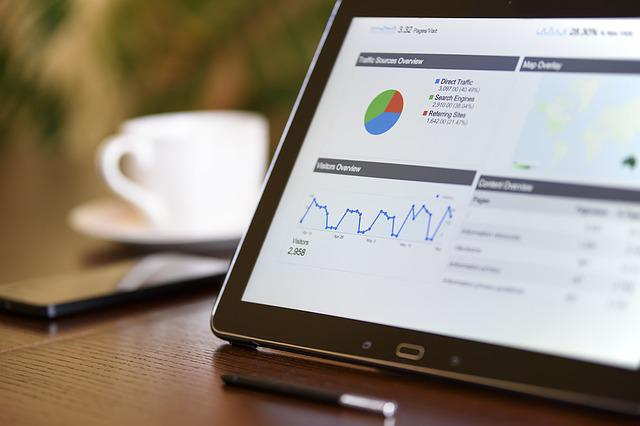
A business plan is a document that outlines a company’s concept, structure, strategy, goals, target market, and financial projections. It defines the mission statement and business model for prospective investors, financiers, and buyers to understand the company’s value.
An SBA business plan refers to a plan required for SBA loan approval. The SBA provides guidance on the specific formatting for SBA business plans, which generally follow best practices.
There are three types of plans:
- Startup : The plan for a new company about to launch or that just launched.
- Operational: Usually, a year-over-year plan for established businesses that outlines a company’s goals and growth projections.
- Scenario-based: An agile plan for companies in rapidly changing industries that may need to pivot their focus as they scale up.
Why are SBA Business Plans important?

Not every SBA loan request requires a plan, but many do – especially when asking for higher borrowing amounts. Even if your specific loan request doesn’t need it, including one can still help your approval odds.
Startups and newer businesses often need a plan because they don’t have financial data. A well-thought-out plan can show projected financial performance and cash flow .
Established businesses often have a plan from when they launched, augmented with an operational plan. An operational plan can help bolster an established company’s SBA loan application.
Think of it like your financial statements show where your company has been and how it got there, while your operational plan shows how it will build on that history for a successful future. The two sources can create a powerful narrative as to why your company should be entrusted with a business loan .
Defining a business plan can help you identify and prioritize the company’s essential financial needs. In doing so, you can also identify the SBA business loan package that will best help you meet those needs.
How do I craft an SBA Business Plan?

There are several important categories to include when writing a plan for an SBA loan. The following aspects are primarily based on a startup plan, but you can also apply them to an operational or scenario-based plan. Some small businesses use business plan software.
Executive Summary
The executive summary provides a high-level overview of your company. This introductory section should include what your company is and why it will be successful. You should include your main competitive advantage, USP, and the mission or vision statement.
The summary should also preview the upcoming sections by presenting the key information. You should briefly summarize your leadership team, sales and marketing goals, and financial projections.
Company Description
In this section, you’ll drill down into what makes your company unique. You’ll want to expand your competitive advantages and the “secret sauce” to your success. Advantages could include having an expert on the leadership team, being in an ideal location, or bringing patented technology or IP to market.
The description should include what problems your company seeks to solve. List any target segments your company intends to serve, such as consumer segments, other businesses, or organizations.
Market Analysis
In this section, you’ll use market and competitor research to demonstrate your knowledge of the industry and your target segment. It would be best if you expanded on how your competitors operate and what they do successfully. You’ll then showcase how you can improve or do things differently to compete in the market.
Organization and Management
The organization and management section describes your company’s legal and organizational structure. You’ll identify if the company will incorporate as a general or limited partnership, LLC, S-Corp, or C-Corp . You should also identify the owners.
You’ll include the organizational chart in this section as well. The org chart lays out who’s in charge of the company, typically with an executive leadership team and possibly a management team. Consider including the resumé or CV for each member of your leadership team.
Service or Product Line
You’ll use this section to identify what products or services you intend to sell. You should identify the market need for the products/services and how they will benefit your customers.
The products or services described should include any plans for IP copyrights or filing patents . Include any research and development plans as well.
Marketing and Sales
Your marketing and sales plans should outline your strategy to attract and retain customers and how you will process sales. There are many marketing and sales strategies across various industries, and your plan might evolve as your company grows .
Marketing plans should include your branding strategy, your marketing channels (print, TV, social media , banner ads, SEO, etc.), and your target customers. Your sales strategy should include how you intend to collect and process payment.
For example, will you invoice customers or sell on credit? What point-of-sale system and payment methods will you accept if opening a store or physical location? If you’re selling online, how will your eCommerce platform operate?
Funding Request
You’ll only include this section if you are requesting funding for your business operation. The request should identify how much you need, how long the funds will last, and how you’ll use the money.
One of the critical decisions is if you’re looking for equity financing or a business loan. In equity financing, you sell a portion of your company’s ownership for funding. In addition to selling shares in your company, equity financing might include a seat or seats on your board of directors.
With a business loan, on the other hand, you don’t give up any ownership in the company, but you do incur debt . The funding request is most likely for a business loan if you’re preparing the plan for the SBA. In loan requests, you should also identify your requested terms.
Financial Projections
This section aims to show that your company is viable and stable. The goal is to convince the reader that your company is or will be a success.
Established businesses should include income statements, balance sheets, and cash flow statements for the previous three to five years. List any collateral you could offer for a business loan .
Startups and established businesses should provide a prospective financial outlook for the next five years. New businesses should include quarterly projections for their first year in business. Future financial plans include projected income statements, cash flow statements , and balance sheets.
The appendix includes any additional relevant information. You can use this section to list any requested information as well.
Examples of supporting documents:
- Credit histories.
- Resumes or CVs.
- Product pictures.
- Reference letters.
- Business licenses and permits .
- Patents, contracts, or other legal documents.
How to apply for an SBA Loan:

United Capital Source can help you apply to an SBA-approved lender following these steps.
Step 1: Ensure You Qualify
You’ll need a credit score between 650-700 and a healthy, consistent cash flow. How you intend to use the money plays a significant role as well.
Step 2: Gather Your Documents
Be prepared to provide:
- Driver’s License.
- Business license or certificate.
- Voided Business Check.
- Bank Statements.
- Credit Reports.
- Business Tax Returns.
- Credit Card Processing Statements.
- 3 Years of personal and business tax returns
- Personal Financial Statement.
- List of Real Estate Owned.
- Debt Schedule/Loan/Rent/Lease Documentation
- Deeds/Title/Ownership documentation for any collateral/Security
- Current Profit & Loss Statements and Balance Sheet Year-to-Date
- A/R and A/P Reports
- Business Plan .
- United Capital Source 1 Page Application
Step 3: Fill Out the Application
You can begin the application process by calling us or filling out our one-page online application. Either way, you’ll be asked to enter the information from the previous section along with your desired funding amount.
Step 4: Speak to a Representative
Once you apply, a representative will reach out to you to explain the repayment structure, rates, and terms of your available options. This way, you won’t have to worry about any surprises or hidden fees during repayment.
Step 5: Receive Approval
SBA Loans through our network generally take 3-5 weeks to process. Once approved and your file is closed, funds should appear in your bank account in a few business days.
Frequently Asked Questions

Here are the most common questions about writing a business plan for an SBA loan request.
Does the SBA require a Business Plan?
The answer to this question comes down to the specific loan you’re requesting and the SBA lender you’re working with. Sometimes, the SBA might require a plan, and sometimes the lender might need it. It can help bolster your loan application even when it is not required.
Does the SBA help write a Business Plan?

The SBA provides some resources and tools to help you write a plan. Visit the SBA website for resources like the SBA business plan template.
If you need additional help, small business development centers are available to help you write a plan.
What is a Lean Business Plan?
A lean business plan is a shortened and streamlined version of a standard plan. It does not go as in-depth and only provides key elements of the plan. Lean business plan sections include:
- Key partnerships.
- Key activities.
- Key resources.
- Value proposition.
- Customer relationships.
- Customer segments.
- Cost structure.
- Revenue streams.
Should I write a Traditional or Lean Business Plan?
If you’re applying for a loan , you should include a traditional business plan. The SBA and SBA lenders prefer companies with an in-depth plan for success.
Lean business plans are usually for startups, whereas traditional business plans are for any company. You might only need a lean plan if you’re applying for an SBA microloan , specifically for startups.
Traditional Business Plan Pros & Cons

- In-depth analysis of the company & projected success.
- Sets specific goals and milestones to measure success.
- Keeps leadership, operational, marketing & sales teams aligned.
- It’s the standard plan requested for business loan applications.
- More time-consuming & challenging to write.
- Might be difficult to accurately project financials.
Lean Business Plan Pros & Cons:
- Typically, only one page & only takes an hour to make.
- Summarizes only the most critical information.
- Ideal for startups, agile businesses, & companies in volatile industries.
- Does not provide in-depth information about the company.
- Does not provide a detailed plan to achieve goals.
- Lenders & investors may request more information.
Can my Business Plan change over time?
Yes, it is common for a plan to change or evolve. Industries, trends, and your competitive market almost always change, and so should your business plan.
It’s recommended to update your business plan once a year or any time you make major changes, such as upgrading or adding products/services, changes in ownership or executive leadership, changing locations, or pivoting into a new market segment or industry.
SBA Business Plan – Final Thoughts
Wise small business owners plan. A business plan helps clarify your company’s mission, products or services, financial goals, and more. A solid plan helps get everyone in the organization on the same page and working towards the same goals.
A plan is also essential when courting financing for your company, whether you’re looking for investors, buyers, or a business loan. Luckily, the SBA outlines its preferred plan format, which we discussed in depth. Preparing your business plan according to the SBA’s format is one of the vital steps in preparing an SBA loan application .
Contact us if you need more guidance on business plan formatting or if you’re ready to apply for a small business loan.
Share this post:
- Categories: Business Tips , Small Business Loans
United Capital Source

What is a Small Business Slush Fund? – The Essential Guide

What is Commercial Auto Insurance? – The Essential Guide

What is QuickBooks Workforce: The Essential Guide
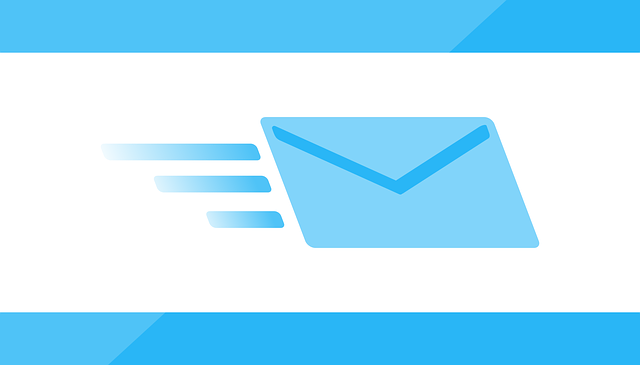
Best Free Business Email Solutions: The Essential Guide
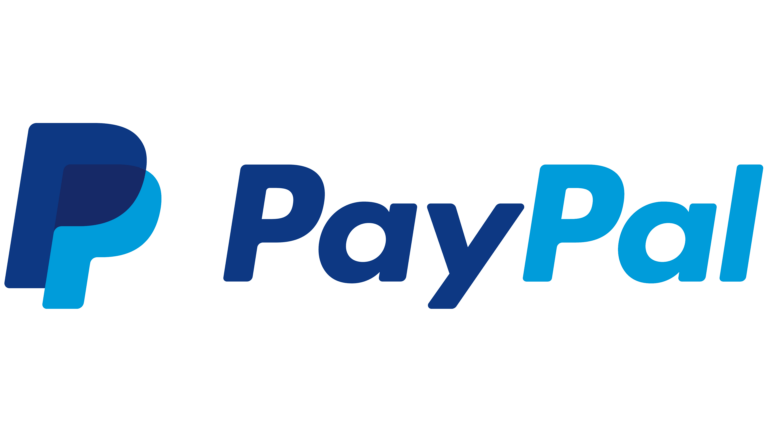
PayPal Business Loan Scale Back: What it Means for Your Financing Options

What is Form SS-4: The Essential Guide
Most recent articles, ready to grow your business see how much you qualify for:.
Current monthly sales deposit average to your business bank account?
I don't own a business & want to learn about your loan programs $ 0 - $ 5,000 $ 5,000 - $ 10,000 $ 10,000 - $ 25,000 $ 25,000 - $ 50,000 $ 50,000 - $ 100,000 $ 100,000 +
How much Working Capital would you like for your business?
$ 5,000 - $ 10,000 $ 10,000 - $ 50,000 $ 50,000 - $ 100,000 $ 100,000 +
State Alabama Alaska Alberta Arizona Arkansas British Columbia California Colorado Connecticut Delaware District of Columbia Florida Georgia Hawaii Idaho Illinois Indiana Iowa Kansas Kentucky Louisiana Maine Manitoba Maryland Massachusetts Michigan Minnesota Mississippi Missouri Montana Nebraska Nevada New Brunswick New Hampshire New Jersey New Mexico New York Newfoundland and Labrador North Carolina North Dakota Northwest Territories Nova Scotia Nunavut Ohio Oklahoma Ontario Oregon Pennsylvania Prince Edward Island Quebec Rhode Island Saskatchewan South Carolina South Dakota Tennessee Texas Utah Vermont Virginia Washington West Virginia Wisconsin Wyoming
Need Instant Help?
Quick links.
Fraud Disclosure:
Please be aware that individuals have been fraudulently misrepresenting to business owners (and others) that United Capital Source, Inc. (“UCS”) can assist small businesses in receiving government grants and other forgivable business loans, when in fact those grants or loans do not exist or are not available. These individuals have ulterior motives and are engaging in the unauthorized use of the names, trademarks, domain names, and logos of UCS in an attempt to commit fraud upon unsuspecting small business owners.
UCS will never communicate with a prospective client on Facebook, Facebook Messenger, or any other type of social media. Further, any email communications will always come from an official UCS email address and not a Gmail, Yahoo, or other email domain. If you believe you have been contacted by someone posing as an employee of UCS, please email [email protected] .
- To be eligible, it’s necessary to have a business bank account with a well-established U.S. bank such as Chase, Wells Fargo, Bank of America, Citibank, or other major banks. Unfortunately, online-based bank accounts like PayPal, Chime, CashApp, etc., are not permitted.
- When describing your current average monthly sales deposits to your business bank account, please provide accurate information. Our approval process is based on your current business performance, and it’s essential to provide accurate details about your current sales in the first question on the application form. We cannot approve applications based on projected revenues after receiving funding.
Take a minute, Get a FREE Consultation
- No Cost, No Obligation Quote
- Multiple products offered
- A few minutes can shape the next few years
$1.3+ Billion Matched to US Businesses
Find the best business loan rates (2024)

How to Write an SBA Business Plan

TABLE OF CONTENTS

Applying for a loan through the Small Business Administration (SBA)? Here’s how to write an SBA business plan for your application.
We’ll walk you through the process and explain:
- Why you need an SBA business plan
- How to write a business plan when applying for an SBA loan
- The elements of an SBA business plan template
- How to prepare your plan for a successful SBA loan application
Why You Need a Small Business Administration Business Plan
The SBA works with a network of approved lenders to support a variety of loan programs designed to help small businesses succeed. To make these loans affordable, the SBA guarantees the loans, reducing risk to lenders and enabling them to charge lower rates. Approved lenders must not exceed rate caps set by the SBA. This makes these loans one of the most affordable forms of financing for small businesses .
When deciding which loan applications to approve, one of the most important factors lenders consider is your company’s ability to repay your loan. Because of this, one of the best ways to improve your odds of getting a loan is to present lenders with a well-written business plan.
How to Write a Business Plan for an SBA Loan
A typical sample business plan for an SBA loan typically includes 9 key components, according to the SBA :
- Executive summary
- Company description
- Market analysis
- Organization and management
- Service or product line
- Marketing and sales
- Funding request
- Financial projections
Use this SBA loan business plan sample outline to organize the structure of your plan. Then use the detailed explanation of each section below to flesh in your outline.
To fill in the details of your outline, you may find it convenient to first assemble some preliminary information you’ll need, including:
- A brief statement summarizing your company mission
- Business incorporation papers
- Market research summaries and resources
- Your company organizational chart
- Resumes of key staff members
- Marketing and sales strategy planning
- Financial statements projecting your business performance over the next few years, including a profit and loss statement (income statement), balance sheet and cash flow statement
Having this information available will make it easier to write your plan.

Filling in Your SBA Business Plan Template
Now we’ll explain what belongs in each section of your business plan. The items included below illustrate what typically goes in each section, but depending on the nature of your business, you may choose to omit certain items or include others. Adjust these guidelines to your individual needs.
1. Executive Summary
Your executive summary presents a short overview of the highlights of your business plan. It’s designed as a short overview of your plan for busy lenders who have to read many SBA loan applications are trying to decide whether it’s worthwhile to continue reading the rest of your plan. If a summary doesn’t grab their attention and convince them you’ve got a solid business plan, they may not read the rest of your plan.
With that in mind, it’s crucial to focus your summary on the main points of your plan and to keep it short. A couple of pages is a good target length.
Your executive summary should briefly cover:
- Your company’s mission statement
- A description of your company’s product or service
- Essential information about your leadership, employees and location
- Your company’s finances
- Your funding request
You may find it easier to outline your executive summary briefly and then write the rest of your business plan. You can then condense the detailed information from your plan into your executive summary to flesh it out.
2. Company Description
Your company description discusses:
- Your company’s mission
- What you do for your customers
- Who your target market is
- How you stand out from your competitors
You may find it easier to write this section after you’ve done your market research and developed a marketing and sales strategy.
3. Market Analysis
Your market analysis summarizes the results of your market research, covering items such as:
- The size and growth trends of your target market
- The composition and needs of your target demographic
- What your top competitors are doing
- How your company can gain a competitive advantage
Doing your homework when writing this section can help you persuade lenders that your business plan is viable. It can also help you make realistic revenue projections for developing your financial statements .
This section is a good place to include visual aids such as graphs and charts that illustrate the size of your market.
4. Organization and Management
This section covers information such as:
- The legal structure of your business ( sole proprietorship , partnership, LLC, S-corporation, or C-corporation)
- The organizational structure of your staff, which can include an organizational chart
- The backgrounds of your key personnel, which can include curriculum vitae or resumes
- Your operational plan, describing how you will run your business
5. Service or Product Line
This section addresses items such as:
- What products or services your company sells
- How your product or service benefits your customers
- Your product or service’s lifecycle (how your company will launch your product or service and grow market share)
- Intellectual property issues associated with your product (patents, copyrights)
- Research and development your company is doing related to your product or service

6. Marketing and Sales
Your marketing-and-sales section should convince lenders you have a viable plan to promote and sell your products or services. It covers topics such as:
- Your unique selling proposition (how you will position your brand to convince customers they should buy from you instead of a rival brand)
- What marketing channels you will use to promote your brand
- Your sales process
Writing this section can also help you estimate sales projections, which can be useful when creating your financial projections.

7. Funding Request
Your funding request formalizes what you’re asking for from prospective lenders, detailing key items such as:
- How much funding you need
- What type of funding you’re requesting (different business loan options , a line of credit or merchant cash advance)
- Your desired terms
- The amount of time your request covers
- What the funding will be used for
- How you intend to repay what you borrow
8. Financial Projections
This section gives lenders a picture of your company’s financial shape by summarizing items such as:
- Your company’s annual revenue, expenses and profits
- Your company’s balance of assets and liabilities
- Your company’s cash flow
- Your analysis of how long it will take your company to break even
- Relevant highlights of your personal finances, such as your net worth and credit score
- Collateral you could use to put up for a loan
Your company’s financials should be fleshed out in spreadsheets covering your key financial statements:
- Profit and loss (income) statement
- Balance sheet
- Cash flow statement
These statements and others you choose to use can be summarized in your business plan, with full details in attached spreadsheets.
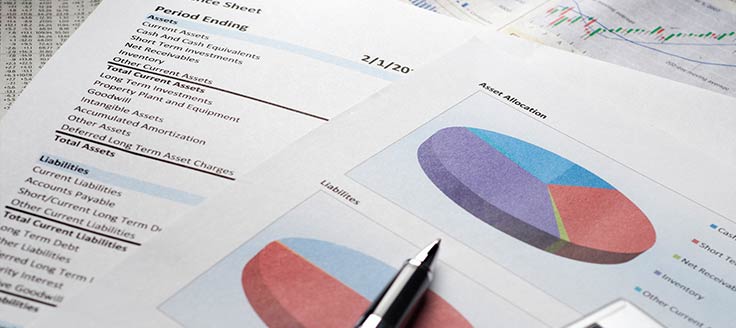
9. Appendix
Your appendix includes any supporting documents that can help you make the case for your loan request, such as:
- Financial statements
- Credit histories
- Market research articles or links
- Marketing graphs and charts that go beyond the highlights included in your marketing section
Feel free to include any additional items that you think will impress lenders.
Preparing Your Plan for a Successful SBA Loan Application
Before using your business plan to apply for an SBA loan, you may find it helpful to have an expert review your plan and make suggestions on how to improve it. The SBA provides works in partnership with organizations such as SCORE to provide entrepreneurs with access to business mentors who can advise you on developing your business plan and applying for a loan. The SBA’s website includes an online tool to help you find local assistance from SCORE and other partner organizations in the agency’s network.
When you submit your plan with your loan application, lenders will typically check your personal credit score to evaluate your creditworthiness. You can improve the odds of your business plan succeeding by taking steps to improve your credit score before applying for a loan. A good place to start is by requesting a free copy of your credit report from AnnualCreditReport.com.
Using Your SBA Business Plan to Secure a Loan
- About the Author
- Latest Posts
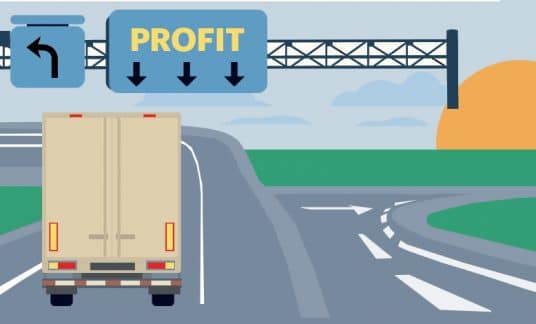
Is the Trucking Business Profitable? Challenges and Opportunities
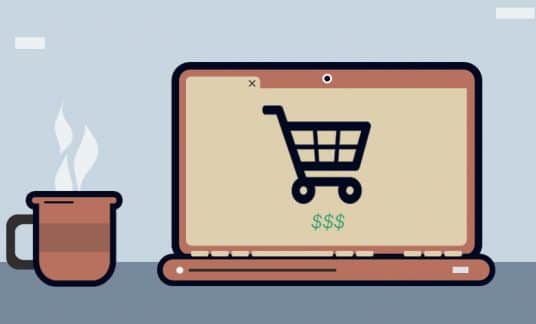
10 Leading Business Trends in 2024 to Watch

8 Workplace Trends in 2024 (Plus How to Adapt to Them)
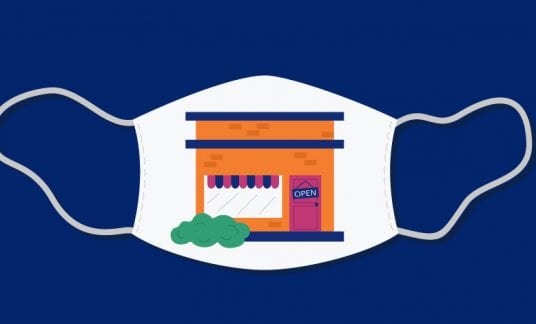
Coronavirus Predictions: 12 Ways COVID-19 Might Reshape Small Businesses
On a similar note..., you may also like..., explore our most popular tools.

You’re subscribed!

How to Write a Business Plan for an SBA Loan
- December 8, 2021
Is a business plan needed when applying for an SBA loan? This is one of the most frequently asked questions we hear when consulting with clients looking to secure funds through one of the many SBA loan programs. The response is yes, a business plan is needed when applying for an SBA loan, no matter which program you choose. From there, clients typically ask us how to write a business plan for an SBA loan. This process can be challenging, but if you’re going to secure the funds you need to start your own business, you’re going to need a business plan. This document must be well-written, clear, concise, and must prove to the reader that every facet of your business has been addressed. A professional business plan consists of several different strategic sections. We’ve created an SBA Business Plan Checklist to help guide you through this process.
Executive Summary
The first thing the reader is going to see when they begin reading your document is the executive summary . This section is for all intents and purposes your first impression. This is not the time to hold back or be shy. Quite to the contrary, the executive summary is where you make your business case and begin planting seeds in the mind of the reader. Don’t waste time with this section. Within the first paragraph, you need to hit the ground running, stating the problem and how your business will solve it.
The importance of a solid executive summary cannot be overemphasized, but in some situations and with certain readers, it’s the only piece of the business plan that gets read. If the reader, be they a lender, investor, or venture capitalist, like what they read, they move to negotiating terms and asking more detailed questions. If the writer does a poor job of presenting their case in the executive summary, the entire business plan and all the countless hours you spent working on it can all be doomed. Take the time, map out this section, think through your draft and make sure you’re this portion of your business plan makes the right impression. Guard against making this section too long. A good rule of thumb for an executive summary is no more than two pages. Keep that in mind as you begin to write yours.
Company Description
Once you’ve written your executive summary, it’s time to move to the Company Description. The goal here is to build on the momentum you established in the previous section. The composition of this section can vary but should include the name of the business, legal structure, location, and if appropriate, the history of the business. Mission and vision statements can also be added to this part of your business plan. Remember, the goal is each time the reader completes a section, you want their interest levels to rise. When this happens, your chances of securing capital increase exponentially.
Market Analysis
Showing you understand the market you’re going to be operating in is important to any financing or lending institution. You’ve worked hard to get the attention of the reader and you don’t want to lose your pace. Take the time to research your market and understand the trends, forecasts, and how your product or service will compete. Be prepared to discuss any challenges you see and explain how you will overcome them. This is a key piece of the business plan, and it actually begins to set the tone for the upcoming financial portion, so by all means, spend as much time as needed here. Be thorough, cite reputable sources, and be able to defend your research. Showing your audience that you understand the market and have done the hard work to present your findings well will go a long way when the time comes to make the final lending decision.
Management Overview
By this point, you’ve given the reader a window into who you are as a company. Now, it’s time to let to know who you are, as a professional! Look at this section as a resume of sorts, told in a narrative form. You’ll want to include key accomplishments and past experiences that mesh with the business opportunity. This is not the time to be modest, let your professional light shine. Be bold, assertive, and sell yourself as a leader. When you do this, the reader becomes more comfortable with you, your business, and your viability as a partner.
Be prepared to highlight your management team and the value they’ll bring to the venture. What are their responsibilities and how do past experiences align with the requirements of the ones they’ll be charged with managing? Academic accomplishments and certifications should also be included. Lastly, show the diversity of the team in terms of expertise and knowledge. The goal is to present a well-rounded management structure that has the ability to guide the venture toward ongoing success.
Product or Services
Any financial entity is going to want to see an in-depth presentation of the product or service you plan on providing. Take this time to build a strong elevator pitch component, discussing your product or service in great detail while explaining the problem it will solve. This section might also include a SWOT and Competitive Analysis. SWOT stands for Strengths, Weaknesses, Opportunities, and Threats. When developing this portion, take time to build a list for each section and be as truthful as possible. The Competitive Analysis should look at your top three competitors and include key details on their business model and how yours stacks up.
Marketing and Sales
The Marketing and Sales section discusses how you plan to reach your customer. A brief analysis of the target customer should be included, but the bulk of the content should focus on marketing and sales strategies. Be aggressive in this area yet practical and strategic and map out tactics that are commensurate with the current level of your operation. While the current position should be taken into consideration, the marketing and sales portion should also focus on the long-range strategies that will be used as the business continues to grow and evolve through the various phases.
Funding Request and Financials
You’ve made it this far and you’re almost home! No time to slow your pace, in fact, now’s the time to pick it up as you formally request funding. Be prepared to discuss how those funds will be allocated and show strong financials that will position your business to grow while at the same time, servicing the loan.
The financials should also include a revenue forecast, a profit and loss, and cash flow statement, a balance sheet, and a personnel forecast. These should cover five years of business with an appendix that gives a monthly breakdown of year one. Make sure your numbers make sense and if necessary, spend time reviewing them with a seasoned financial professional. Remember, this is your big chance, and you don’t want to miss out because of a simple mistake or miscalculation that could’ve easily been caught beforehand.
Trust The Coley Group to Write Your Business Plan
Writing a business plan that meets the strict SBA guidelines is a challenging exercise that calls for a unique writing skill set. For nearly two decades, The Coley Group has provided business plan writing services for clients looking to secure funds through SBA loan programs. Our team of MBA professionals has written thousands of plans for a national base of clients. If you’re interested in learning more about the suite of business plan writing solutions we offer, please contact us today.
- Our Process
- Business Plans
- SBA Business Plans
- Investor Business Plans
- Franchise Business Plans
- Immigration Business Plans
- Non-Profit Business Plans
- Other Services
- Case Studies
- White Papers
- Request For Proposal
Can we talk about it?
- © 2025 The Coley Group. All Rights Reserved.
- Terms of Use
- Privacy Policy
Dallas WordPress Development: Big D Creative

SBA Business Plan Template Essentials: The Complete Guide
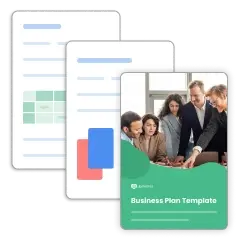
Free Business Plan Template
- August 23, 2024
- 10 Min Read
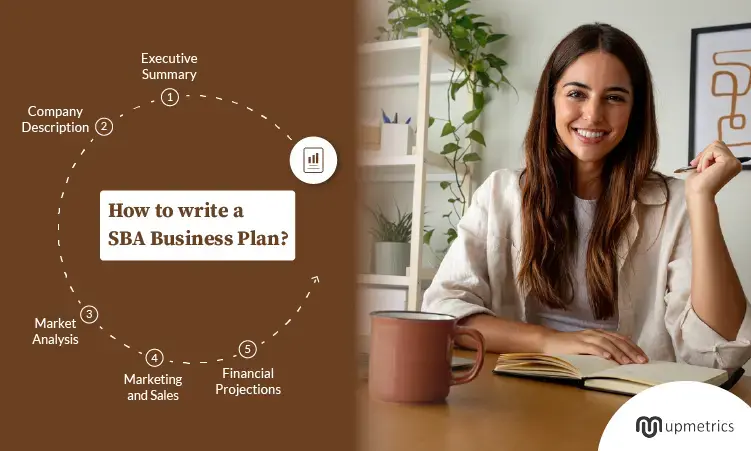
Loans by the US Small Business Administration (SBA) have turned the dreams of thousands of aspiring entrepreneurs into reality.
Good news? You too can achieve your business goals with the support of an SBA loan.
One of the key requirements for securing such a loan is submitting a comprehensive business plan—a document offering an in-depth overview of your business idea and its sustainability.
Don’t worry.
Writing an SBA plan is quite easy. With this blog post, we will guide you through the process and offer a free SBA business plan template to make it even easier.
But before that…
What is an SBA business Plan?
An SBA plan is a professional document outlining your business objectives and strategies along with a detailed action plan to execute them. This plan is specifically used by small business owners to apply for SBA loans and grants.
Like a traditional plan, an SBA plan offers a detailed overview of your entire business. It includes sections about the target market, competition, products and services, operations, marketing strategy, management team, and finances.
While there’s no fixed format, using an SBA business plan template to write your SBA plan is recommended.
Importance of an SBA business plan
Writing a business plan is helpful for organizations to get a clear understanding of their business idea and its viability. However, that’s not it.
Here are a few reasons that make your SBA plan extremely important:
- Helps secure SBA loans and even funding from investors.
- Establishes clear goals and milestones to help you stay focused.
- Offers a clear business vision and a strategic roadmap to achieve your goals.
- Solidifies your business idea by compelling you to address missing gaps.
- Establishes credibility amongst lenders and fosters growth amongst stakeholders.
- Instills clarity amongst team members bringing them all on the same page.
All in all, a well-detailed SBA plan builds the foundation for you to launch and build a successful business.
Say goodbye to boring templates
Build your business plan faster and easier with AI
Plans starting from $7/month

How to write an SBA business plan
As with traditional plans, an SBA business plan also follows a similar format. The SBA business plan template contains nine major sections, including:
1. Executive summary
An executive summary is a concise summary of your SBA business plan.
It highlights high-value points of your plan to help the readers get a quick gist of your business and its strategies.
The executive summary of your plan can touch on the following aspects:
- Business introduction: Start your executive summary by briefly introducing your business to your readers.
- Description of business opportunity: Describe the business opportunity by highlighting the problem you’re solving for your target customers.
- Target market: Mention your target customers to whom you’ll sell your product or service.
- The solution you offer: Explain how your product or service is the ideal solution for the problem your target customer is facing.
- Market competition: Identify your potential competitors and mention them.
- Marketing and sales strategy: Describe how you will market your product and mention your sales channels.
- Financial projections: This is essentially a forecast of future expenses and revenues.
- Execution of your plan: Explain how you will implement your plan and strategize all your objectives.
2. Company description
In this company overview section of your SBA business plan, you will describe what your company does and every detail about your company. It includes your target customers, your business partners, your competitors, and more.
Below are the major key points to include in the company description section:
- Identity and objective: Mention your company’s identity and what your company does. You may also include your company’s ethics and values.
- Company’s offerings: Define in detail what your company offers. Explain the product or service that you’re selling.
- The problem you solve: Specify the problem you chose to solve to cater to the needs of your customers.
- Target customers: State which section of the people you have targeted. You should also mention your customers’ priorities and values.
- Your strengths: Outline your competitive advantage over other players in the market. You can also list your competitors and mention how you’re different from them.
- Partners: Introduce your business partners and offer details such as the partnership period, their contribution, etc.
3. Market analysis
In this section, you write a detailed analysis of the market in which your business operates. The following are the market research data you should include in your SBA business plan:
- Briefly explain what other companies in your industries are doing
- Outline the strengths and advantages of your competition
- Specify the market trends occurring in your market
- Examine what makes the companies in your industry successful.
- Demonstrate your competitive advantages to outrun your competition
- Research strategic advantages of competitors like the ideal location, cheap procurement of raw materials, etc.
4. Organization and management
In this section, you will define the business structure. This includes the legal and organizational structure of your business along with the management practices you follow.
Legal structure
Here, you describe the legal structure of your business .
Is it going to be a sole proprietorship, limited partnership, limited liability company(LLC), or C or S corporation? Explain in complete detail how you’ll structure your business legally and how it’ll impact your business operations.
Organizational chart
Attach an organizational chart outlining the internal structure and hierarchy of your business. Also explain the roles, responsibilities, and relationships between individuals in the company.
5. Service or product
In product and service section , you give a complete description of the product or service you’re selling to your customers. The following are the key aspects that this section of your SBA business plan should have:
- Describe in detail the product or service you’re providing to your targeted customer base.
- Explain the pricing of your product. You should also mention all the costs that have contributed to the final price of the product.
- List down all the possible uses of your product and how your customers will benefit from it.
- Discuss the product life-cycle of your product. Explain in detail the four stages of a product life-cycle: Introduction, growth, maturity, and decline.
- Include a plan mentioning how you will handle the intellectual properties, copyright, and patent filings.
- Mention all or any research and developments you have regarding your business.
6. Marketing and sales
In this sales and marketing section, outline your marketing strategies , sales channels, and the budget for both. Ensure that you include the following important points in this section:
- Write a detailed plan of how you’ll market your product to draw your customers
- Provide the details of the sales process and mention the sales channels you’re choosing.
- Mention the details of your budget regarding marketing and sales of the product
- Discuss the goals of your marketing and sales strategies
- Review and address your pricing strategy as it affects your marketing and sales.
7. Funding request
The most prominent reason why entrepreneurs create an SBA business plan is to make lenders believe that they are a viable and reliable business venture. This section is simply for putting forward your funding requests .
The following should be included in this section:
- Specify how much funding you’ll require to run your business for the next five years
- Explain briefly how you’ll use the provided funding
- Mention what type of funding you’re looking for
- Add a detailed description of your future financial plans. This includes debt repayment plans, cash flow management, budgeting expenses, etc.
8. Financial Projection
The purpose of financial projection is to help the readers assess your company’s financial stability. This section includes the current financial reports of your business and future projections.
It’s focused on convincing potential funders that your company is financially stable and solvent. The below information should be included in your SBA business plan:
- Income statements for the past three to five years
- Balance sheets of the past three to five years
- Cash flow statements for the past three to five years
- Business collaterals
- Projected income statements
- Projected balance sheets
- Projected cash flow statements
- Budgeted capital expenditures
The ideal way to represent future projections is by using monthly or quarterly projections in the first year and annual projections for the years afterward.
Explain how the projections and the information represented are relevant to your funding request. Consider the SBA loan rates and the guarantee fee while projecting your new payment amounts.
9. Appendix
The Appendix is the last section of your SBA business plan. It contains all the additional and supporting documents, important to explain a specific aspect of your business.
It could also include documents that are exclusive to a particular lender that may not fit into the predefined outline of a business plan .
Usually, the common information in an appendix includes:
- Credit history
- Product photos
- Letters of reference
- Licenses and permits
- Legal documents
That’s it. Those were all the sections that an SBA business plan should include.
Resources for writing an SBA business plan
Here are a few additional resources to help you write your SBA business plan efficiently.
U. S. Small Business Administration
The SBA business planning tool offers step-by-step guidance and tips to write a fully detailed business plan. Entrepreneurs can also take online lessons on the SBA learning platform to enhance their understanding of business planning.
Apart from these, there’s an SBA’s business guide that helps with business planning, launch, and funding.
SCORE is a non-profit resource partner with SBA. It has the largest network of mentors for small businesses in the US.
Business owners can request mentorship on this platform to get advice on financial and business planning. These mentors can also assist with valuable knowledge on writing a solid business plan.
One can also choose to attend workshops and online webinars hosted by these industry veterans to strengthen their understanding of business.
Local Small Business Development Centers (SBDC)
SBDC offers training and advice to small businesses for free or extremely low fees. The experts at SBDC can help with business planning and financial management. Most SBDCs host regular sessions on writing a business plan. Some of these experts can also review your business plan and offer valuable feedback.
Women’s Business Centers (WBC)
WBC is again a resource partner at SBA offering low-cost business counseling and training to women wanting to launch, grow, or plan their business. Their one-on-one counseling and group sessions also offer help for writing a business plan.
These resources make it easier for entrepreneurs to write their business plans even with no prior experience.
Download the SBA Business Plan Template
Need help writing your SBA business plan from scratch? Here you go— download this SBA business plan template and get started.
This template is designed specifically for businesses planning to apply for SBA loans. The step-by-step guide, examples, and tips in this template will help you prepare an actionable plan that meets all the essential guidelines.
Writing a perfect business plan can be tricky, especially when you have to present it to lenders. However, once you understand what the lenders look for in a business plan, the process gets quite easier.
Fortunately, Upmetrics can simplify this process of business and financial planning with its AI-powered app. It offers step-by-step guidance, 400+ fully customizable templates, and AI assistance to help you write a solid business plan in minutes.
So why wait? Build your SBA business plan today!
Build your Business Plan Faster
with step-by-step Guidance & AI Assistance.
Frequently Asked Questions
Are there specific guidelines from the sba for business plans.
There are no specific guidelines from SBA about how the business plans should be. As long as the business plan meets your needs, any structure is acceptable.
However, SBA does offer resources to help you structure and write your business plan effectively. Following that structure will help you cover all the information essential for securing the loan.
Can I use the same plan to apply for different types of funding?
Yes, you can use the same plan for different funding applications. However, it’s important to ensure that your business plan meets the criteria laid out by that specific financial organization.
Ideally, you should customize the sections of your plan depending on where you apply to increase your chances of securing funds.
How does a business plan help you get an SBA loan?
One of the criteria for acquiring an SBA loan is to attach a fully detailed business plan along with the application. A business plan builds credibility and shows that you have put in essential efforts to understand all the aspects of your business thoroughly.
How detailed does an SBA loan business plan need to be?
An SBA plan should be comprehensive enough to offer a detailed overview of your business objectives, strategies, and finances. It should contain sections like a traditional business plan and these sections should be detailed to guide your business operations.
How long should the SBA business plan be?
An SBA business plan for investors can be anywhere between 15-40 pages long. However, your business plan can be shorter or longer depending on the scope and nature of your business. As long as your business plan contains relevant information, length doesn’t matter.
About the Author
Upmetrics Team
Upmetrics is the #1 business planning software that helps entrepreneurs and business owners create investment-ready business plans using AI. We regularly share business planning insights on our blog. Check out the Upmetrics blog for such interesting reads. Read more
Get started with Upmetrics Al
- 400+ sample business plans
- Al-powered financial planning
- Collaborative workspace
Reach Your Goals with Accurate Planning

How to Write an SBA Business Plan
If you’re thinking about starting a small business, or if you’ve been a business owner for a while but have never applied for capital, you may be wondering where and how to go about it. The good news is that documenting a business plan for SBA loans doesn’t have to be a difficult task. In fact, it can be fun!
A good business plan walks you through each stage of establishing and managing your small business. You’ll use your SBA business plan as a guide to organize, run, and grow your new company. It’s a way to structure through the key elements of your company.
SBA business plans help you get the required capital or acquire new clients or business partners. Investors want to feel convinced and optimistic they’ll see a return on their investment. Your SBA business plan is the weapon you’ll use to persuade people that working alongside your business or investing in your business is a smart choice. That being said, here’s everything you need to know about SBA loans and business plans and how you can increase your chances for success.
What is an SBA Loan?
If you’re a small business owner, you’re in luck. As the name implies, SBA loans are loan programs issued by banks and credit unions backed by the U.S. Small Business Administration (SBA) or a member of its network of supported participating lenders. This means that if you cannot pay back your loan, the government helps repay the traditional lender (bank) that provided the loan.
The SBA requires guarantees from your business partners who own at least 20% of the business, implying if you get an SBA loan, you are putting your assets at stake in case you’re unable to repay the loan. Additionally, companies that have at least 2 years of strong business and financials are mostly eligible for SBA loans. However, if your small business is struggling to make ends meet, an SBA loan may not be the right fit for you.
Irrespective of the personal guarantee requirement, SBA loans are one of the most popular ways to get capital to grow and manage your small business. Not only can you leverage their flexible repayment terms, but you can also take advantage of their low-interest rates to grow your small business. If you want to learn more about it, here’s our guide on SBA business loans .
But before we move any further, let’s take a look at what the SBA is.
The Small Business Administration (SBA) is a government agency in the U.S. that offers help and counseling to small businesses and startups by providing tools such as business planners, small business loans, and other training programs.
It also offers professional business documentation to guide small companies and startups through the procedures for applying for a small business loan. To do so, you must have a strong sense of what your business goals are and what your company does, along with a solid plan.
If your business plan isn’t convincing and effective, you might have difficulty getting an SBA business loan. This is why it is important to have a clear vision of the business goal you want to achieve while working on the documentation.
In this article, we’ll take a look at what an SBA business plan includes.
Why You Need a Business Plan for SBA Business Loans
SBA business loans require a significant amount of documentation highlighting your business goals and your personal finances. You’ll need to mention your previous tax returns, bank statements, and different application forms based on the type of SBA business loan you require.
Alongside your past financial statements, the traditional lender issuing the SBA business loan would want to know about the future of your business. They’ll ask you about your plan on how you’d utilize the loan on your business and that your future cash flow estimates indicate that your company can afford loan repayments.
This is where SBA business plans come into the picture. Besides providing other documentation required for the loan, you’ll need to draft a business plan to go with the rest of the loan application. Not only will your SBA business plan describe your business to your lender, but it will also have financial statements that the bank will require to help identify if you qualify for a loan.
Now, let’s take a look at what the SBA business plan template includes.
Writing an SBA Business Plan: A Comprehensive Guide
Learning how to write a brilliant SBA business plan is a crucial step toward creating a fruitful business. Put simply, a business plan explains exactly what your product or service is and why consumers would want to purchase it, alongside how you will handle any market challenges and environmental risks. It can help you determine what you want to achieve and how you plan to achieve your business goals. This, in turn, can help you to market your business, motivate your teams, and thereby make well-informed decisions.
A strong SBA business plan can also serve as a communication tool for future investors and potential loan providers. It will help you portray your present financial status, active revenue sources, and how you plan to meet revenue estimates. Even though a business plan isn’t relevant for all types of credit, it plays a crucial role in SBA business loans. While no two business plans are similar, every plan should have the following elements:
1. Executive Summary
Your business plan’s executive summary is your only opportunity to introduce your business to potential investors and lenders, which is why it needs to be concise and powerful. This summary should provide a brief gist of the history and background of your business that should be engaging enough for your readers. Oftentimes, it is helpful to write this part at the end – after you’ve spent considerable time examining and articulating all the details of your business.
2. Company Summary
Explain what your product or service does and why consumers or businesses will want to purchase it. Make sure to highlight all the areas where your product or service has leverage over the competition.
On the other hand, add the pending or established copyrights or trademarks, as well as the present or future plans for further research and development (R&D).
3. Market Analysis
Mentioning the strategy would highlight the marketability of your business, your competition, and your position into the competitive landscape.
In the marketing analysis, provide all the information about your target industry, including the market size, target market, the market requirements, and hurdles to entry, like legal conditions and supply issues. Additionally, any information on the market tests you have undertaken should be included in your business plan. You must also include your direct and indirect competition in the market analysis section.
4. Marketing Plan
In your marketing plan, consider highlighting how to promote your business and generate leads for revenue. Describe the functionalities or characteristics of your product or service and how it helps consumers.
Mention how your product or service differs from your competitors in the market and how you will grow your business and generate revenue. Additionally, provide details about your product’s life cycle and intellectual property issues.
5. Management Team
To highlight your human capital, describe your business in terms of structure and leadership. Let your readers know the roles of your employees and their qualifications. Elaborate on this in your documentation, and try providing their resumes as well.
6. Financial Summary
Funding and financial analysis are two of the most crucial areas in your business. Highlight the funding your small business would require and provide supporting financial data on your previous and future financial activity.
Add necessary documents that portray your company’s present financial status, including cash flow statements, income statements, revenue sheets, and balance sheets. Mention your expectations for revenues along with the expense of your products, rent, fuel, electricity, utilities, salaries, and other aspects.
7. Appendix
There are different ways you can organize and present the information given above so you can share it with potential lenders and investors, current and future team members, management teams, and anyone who needs to go through the vision of your company.
Conduct your research and find a business plan format that suits your business goals. There are multiple SBA business plan types for different readers, including investors and employees, so you can change your plan based on your target audience.
Here are a few things you must keep in your mind:
- Create a business plan in a way such that it’s easier to find key information. Create a cover page and table of contents (ToC) that makes basic information easier to find. Moreover, it’s recommended to use dividers with tabs if you’re making hard copies of the documentation and putting them in a binder.
- Make it as detailed as possible. Based on your product or service, you may also want to add a section on Action Plans, which includes data on compliance and safety processes, legal landscapes, regulations, operational & management plans, an employee manual, job descriptions of your staff, and everything you’d want to put on the hard copies (or in the digital document).
- Use an Appendix for highlighting additional information. The Appendix is where you attach supporting documents, including financial and market analyses, staff resumes, logo & branding examples, and so on.
Why more businesses are working with BSBCON
Nowadays, more and more business owners and entrepreneurs are trying their luck in the ever-competitive market.
Business is a vast landscape. There are a number of ways you can leverage to build and promote a marketing idea. However, the first thing you need to promote a product or service is a solid plan, and to propose this plan, your company needs business plan writers.
Think of BSBCON as a crucial and cost-effective extension of your own business. BSBCON is a leading company that offers SMB consulting solutions, including providing thorough business plans, pitch decks, strategic planning, and more, that save you both time and resources.
If you want to increase your chances of securing capital, grants, or investors, partner with BSBCON and get a solid business blueprint with a professional business plan.
BSBCON’s SBA business plan writers offer all such insights, including marketing plans & strategies, pitch decks & storyboards, market research & in-depth analysis, business planning, bookkeeping & accounting, financial modeling – and the list goes on! Get in touch with BSBCON’s SMB consultants today to see how they can help you. With BSBCON, you get guidance to build a strategically designed, SBA-approved business plan that offers everything potential investors need to evaluate your business and business goals.
Let's Get Started!
- Your Name *
- Email Address *
- Phone Number
How can we help you?
Get in touch with us or visit our office

Expert Business Plans and Financials for SBA Loan Applications
Applying for a Small Business Administration (SBA) loan can seem like a daunting task for any small business owner. The complexity of the process, combined with the need for precise documentation, often leads to confusion and frustration.
One of the most crucial parts of your SBA loan application is the business plan, along with the accompanying financial projections. These documents must not only outline your business concept but also demonstrate its financial viability, market potential, and growth capacity.
At Oxbridge Content , we are experts in producing professional, SBA-compliant business plans and financial projections. Our dedicated team of SBA loan business plan writers provides the necessary SBA financial projections assistance , making your loan application process smoother and more efficient.
We specialise in creating documents that help businesses stand out and secure the funding they need.

SBA Loan Applications
Why Your SBA Loan Needs a Professional Business Plan
When applying for an SBA loan, your business plan is one of the most critical components of your application. It is the document that lenders will review to assess the potential of your business and the likelihood that it will be able to repay the loan. A professional business plan is essential for several reasons:
Clear and Convincing Business Model : Lenders need to see that your business idea is feasible, has a solid market presence, and will generate sustainable revenue. A well-organised business plan lays out your business model in a clear and compelling way, making it easier for lenders to understand your vision.
Solid Data to Support Growth Projections : An SBA loan business plan should include data-driven insights that showcase the growth potential of your business. This may include market research, competitor analysis, and a strategy for growth. Lenders are more likely to approve your loan if they see that you’ve done thorough research and have a clear path to success.
Financial Projections : Accurate financial projections are essential for any SBA loan application. These projections must reflect realistic expectations based on industry standards, historical data (if applicable), and market trends. Lenders will scrutinise your financials to assess whether your business can handle the loan repayment. SBA financial projections assistance from Oxbridge Content ensures that your financial documents are thorough and in compliance with SBA guidelines.
In essence, having a professionally prepared business plan increases your chances of approval by providing lenders with the information they need to make an informed decision.
What We Offer for SBA Loan Applicants
At Oxbridge Content, we understand that every business is unique. That’s why our business plan services for SBA loans are completely tailored to meet the specific needs of your business. We focus on providing two key elements that are crucial to your loan application: a comprehensive business plan and detailed financial projections.
Tailored Business Plans : Our team works with you to create a business plan that is specifically designed for your company. We begin by understanding your business model, target market, competitive landscape, and long-term goals. From there, we create a structured and well-organised document that clearly presents your business strategy, objectives, and growth potential. Our business plans are designed to meet SBA guidelines, ensuring that they are compliant with all requirements and standards.
Accurate Financial Projections : Financial projections are often the make-or-break factor in an SBA loan application. We provide SBA financial projections assistance that includes revenue forecasts, expense breakdowns, cash flow analysis, and break-even analysis. These projections are crafted to be both realistic and comprehensive, reflecting your business’s potential while also considering industry trends and market fluctuations. Our financial experts are adept at providing detailed projections that align with the SBA’s requirements.
By combining our business plan expertise with financial projections that are both realistic and comprehensive, we ensure your SBA loan application is robust and well-supported.
Key Components of a Strong SBA Loan Business Plan
To ensure that your SBA loan business plan meets the SBA’s strict guidelines, several key components must be included. Each section of your business plan serves a specific purpose and plays a critical role in convincing lenders of your business’s potential.
Executive Summary : This is the first section of your business plan and provides a brief overview of your business, including its mission, the products or services you offer, and your target market. It also briefly outlines your financial needs and goals, making it one of the most important sections for capturing the lender's attention.
Company Description : This section provides more detail about your business. It covers the business’s history, structure, ownership, and the problem it aims to solve in the market. You’ll want to describe the competitive advantage your business has and how it stands out in your industry.
Market Analysis : Lenders want to know that your business is well-positioned in the market. This section should include detailed research on your target market, customer demographics, trends, and the competitive landscape. It should demonstrate that you have a solid understanding of your market and how you plan to address the needs of your customers.
Organisation and Management : This section outlines your business’s organisational structure, including details about the management team and their qualifications. It’s important to show that your team has the expertise and experience to execute the business plan successfully.
Marketing and Sales Strategy : Lenders will want to understand how you plan to attract and retain customers. This section should include your marketing strategies, sales approach, and customer acquisition plans.
Financial Projections : This is arguably the most critical part of your business plan for an SBA loan. You need to include accurate financial statements, including projected income statements, cash flow forecasts, and balance sheets for the next three to five years. The financial projections must be well-supported by data and align with your business strategy.
Each section plays an important role in persuading lenders that your business has the potential to succeed and repay the loan. Our SBA loan business plan experts are skilled at ensuring every section is well-developed, accurate, and aligned with SBA expectations.
Why Choose Oxbridge Content for Your SBA Loan Business Plan?
At Oxbridge Content, we have built a reputation for providing expert small business loan application help through our comprehensive SBA loan business plans and financial projections. Our clients choose us because we:
Understand SBA Requirements : We are well-versed in SBA guidelines and can help you navigate the specifics of SBA loan applications. Our experience ensures that your business plan and financial projections are fully compliant with SBA regulations.
Provide Custom Solutions : We don’t believe in one-size-fits-all approaches. Every business is different, and we tailor our services to meet your specific needs and goals. Whether you are applying for an SBA 7(a) loan, an SBA 504 loan, or any other SBA program, we ensure your business plan is tailored to reflect your unique position in the market.
Offer Fast Turnaround : We understand that time is of the essence when applying for an SBA loan. Our team works efficiently and can provide you with the necessary documents within a timeframe that suits your needs, without compromising quality.
Experience and Expertise : Our team consists of SBA loan business plan experts who have years of experience in preparing SBA loan applications for businesses of all types. We know exactly what lenders are looking for and how to present your business in the best possible light.
Get Started Today
When you’re ready to apply for an SBA loan, having the right business plan and financial projections can make all the difference. With Oxbridge Content’s expert services, you’ll be well on your way to securing the funding you need to grow and succeed. Our team of SBA loan business plan writers is here to assist with every aspect of your loan application, from crafting a detailed business plan to providing reliable SBA financial projections assistance .
Let us help you take the stress out of the SBA loan application process. Contact us today to learn more about our business plan services for SBA loans and how we can support your application.
Start your SBA loan journey with Oxbridge Content. Our experts are here to provide the guidance and expertise you need to make your application stand out. Let’s work together to secure the funding that will help your business thrive. Reach out today to discuss your needs with one of our specialists.
How To Start a Business In Florida
- Business plans
SBA Business Plan Template
Used 4,872 times
Use our free and fully customizable SBA business plan template to get started when writing a successful proposal for an SBA loan.
e-Sign with PandaDoc

Created by:
[Sender.FirstName] [Sender.LastName]
[Sender.Company]
Prepared for:
[Recipient.FirstName] [Recipient.LastName]
[Recipient.Company]
[Sender.Company] – SBA Business Plan
(company.tagline).
[Sender.Email]
[Sender.Phone]
(Company.Website)
[Sender.StreetAddress] [Sender.City] [Sender.State] [Sender.PostalCode]
Executive Summary
[Sender.PostalCode] is a new business focusing on providing (Product.Service) to residents located in the surrounding areas of (Location). The target market is (Target.Market), with the demographics of the target audience within (Number) miles of (Location) as follows:
(Number) residents
Average income of $(Income)
(Percentage)% married
(Percentage)% in professional/Mgt. Occupations
Median Age: (Number) years
The significant figures part of this start-up are (Owner.Name), the company owner, and (Shareholder.Name), (Shareholder.Name), and (Shareholder.Name) as shareholders of the company.
This business plan aims to reach the following goals:
(Goal) – (Basic.Description)
The requested SBA capital is $(Amount), while the income, expenses, and revenue predicted for this plan are as follows:
Projected annual income: $(Amount)
Projected annual expenses: $(Amount)
Projected annual revenue: $(Amount)
The predicted benefits of establishing this business in the area are:
(Benefit.One)
(Benefit.Two)
(Benefit.Three)
(Benefit.Four)
Company Description
[Sender.Company] is located at [Sender.StreetAddress] [Sender.City] [Sender.State] [Sender.PostalCode] and is an (Company.Type) (such as LLC, sole proprietorship, etc.). After in-depth research into the (Product.Type) market, we have identified several areas that could be improved:
(Market.Gaps) – (Description)
In response to these problems, we have created several solutions as part of our company aims:
(Solution.One) – (Description)
(Solution.Two) – (Description)
(Solution.Three) – (Description)
We are also planning to grow the company, eventually expanding into (Location), (Location), and (Location), where we have identified similar market gaps.
Management Organization
The following persons of interest fill these positions in [Sender.Company]
Hiring Plan
(Owner.Name) will serve as the overall manager for hiring new employees. We will fill the following positions during the start-up operations:
(Number) (Job.Positio)
Market Plan and Analysis
Industry analysis.
The following industry statistics and size facts show that the business will do well in (Location).
Market Size: (Size)
Market Growth: (Growth.Speed)
Market Trends
We have identified the following market trends and how they will impact our business plan positively:
(Market.Trend) – (Impact)
Competitive Landscape
Market reports show the following competitive landscape:
(Competition.Chart)
Our biggest competitor currently is (Primary.Competitor), which has (Strengths), but also critical weaknesses like (Weaknesses). Our business has the following strengths, enabling us to overcome the competition and gain an edge in the market.
[Sender.Company] will serve residents within (Number) miles of (Location). The following location demographics are present in the surrounding area:
Our primary focus groups are:
(Primary.FocusGroup) – (Reason)
(Secondary.FocusGroup) – (Reason)
(Tertiary.FocusGroup) – (Reason)
Goals, Objectives, and Operations
The goals of [Sender.Company] with this business are:
The objectives of [Sender.Company] with this business are:
Products and Services
[Sender.Company] focuses on selling (Products.Services) to the general public (Or retailers, fill this section with a broad idea of your primary target market). These products/services include:
(Description of products/services)
Marketing and Sales
The [Sender.Company] will focus on its unique value proposition, offering (Selling.Point) in a convenient location for customers. Besides excelling in customer service and building a trusted reputation in the community, we will reach out to the community via the following methods:
Email Campaign
We will blanket the surrounding neighborhoods with direct emails. This email campaign will share information on [Sender.Company] and give inducements to convince residents to try out the business.
Public Relations
[Sender.Company] will contact the community and local news outlets to explain our unique offering.
Advertising
We will advertise in the local area and newspapers to gain awareness among the community.
Social Media
Social media accounts will ensure we can gain a following in the market. The pamphlets, emails, and website will have direct links to these platforms to grow the interest in the brand.
Pre-Opening Events
[Sender.Company] will organize pre-opening events to attract prospective customers. We will invite press contacts and local merchants to these events to place attention on the brand.
Customer Communication
Continuous customer communications will be available through a website and monthly newsletter to tell the community about our deals, products, and services.
Financial Data and Forecast
Total funding required: $(Amoun)
Lease and renovation of retail store: $(Amount)
Working capital until break-even: $(Amount)
Funding received to date: $(Amount)
Budget still required: $(Amount)
Funding Request
The total funding [Sender.Company] required to start up this business is $(Amount). We will use this funding as follows:
Capital Request and Repayment
We request $(Funding.Amount) to start up this business, and plan to repay it over the following period:
Appendix Documentation
Business licenses
Permits and certifications
Reference letters
Product photos
Business owner resumes
Contractual agreements pertaining to this business
Legal documents related to this business
[Recipient.FirstName] [Recipient.LastName]
Care to rate this template?
Your rating will help others.
Thanks for your rate!
Useful resources
- Featured Templates
- Sales Proposals
- NDA Agreements
- Operating Agreements
- Service Agreements
- Sales Documents
- Marketing Proposals
- Rental and Lease Agreements
- Quote Templates
- Business Proposals
- Agreement Templates
- Purchase Agreements
- Contract Templates
More From Forbes
Top 10 small business new year’s resolutions for 2025.
- Share to Facebook
- Share to Twitter
- Share to Linkedin
Now is the time to set objectives for 2025.
As the calendar flips to 2025, now is the perfect time to reevaluate your business and establish New Year’s Resolutions for 2025 – if you haven’t done so already!
The new year is a time for self-assessment, evaluating opportunities, and plotting a way forward for new challenges in what promises to be an eventful year with a new, business-friendly Trump administration coming into power.
Here are some tips for taking 2025 head on:
1. Revisit Your Business Plan
A business plan is not just a document written at the startup phase in order to raise capital. Rather, it should be viewed as an evolving roadmap for where you want to take your firm. The business plan outlines the strategies and tactics you'll use to grow your company, helps you anticipate challenges, and sets milestones for gauging your progress.
Your business plan is meant to be updated. As your business grows, use it to fine-tune strategies to continue scaling effectively. The beginning of the year is a natural time to reevaluate your company’s growth trajectory and assess whether or not you are reaching your goals. Begin 2025 by determining what changes should be made to take it to the next level in the coming year.
Related: 5 Common Mistakes That Small Business Owners Make Over And Over
An Update On The Surprisingly Close ‘Squid Game’ Season 3 Release Date
Google chrome 2fa bypass attacks confirmed—millions of users at risk, ‘wicked’ is now streaming—how to watch the blockbuster musical at home, 2. continuously gather market information.
If you have a solid and loyal base of customers, use them for feedback about your performance as well as the performance of your competitors. If the other guys are still in business, they must be doing somethings right. So, don’t just ask for information about your own products and services, find out their thoughts about others in the marketplace. Perhaps some of your competitors have introduced new products or improved their customer service – what is your plan in response? Keeping abreast of market trends, evolving customer needs, and successful competitor strategies will help you identify opportunities and gaps in the marketplaces.
A profitable business has more money coming in than going out.
3. Manage Your Cash Flow More Effectively
Managing cash flow is critical for the long-term success of your business. Start by creating a 6–12 month cash flow forecast at the beginning of the year. This projection should list expected sales and returns on investments you have made, along with cash outflows (expenses, debts). Keep track of changes in revenue, expenses and, most importantly, your business earnings . If your expenditures are rising faster than your revenues, look for ways to both increase sales and cut costs.
Other cash flow tips:
- Invoice promptly and follow up on delinquent payers.
- Optimize inventory management. Having excess inventory uses up cash. Conversely, having too little inventory can result in missed sales opportunities.
- Negotiate better terms with suppliers and vendors – especially if you are among a supplier’s top customers. Perhaps you might be able to secure discounts for advance payments via ACH, rather than credit card payments. Investigate the possibilities. It doesn’t hurt to ask.
- Review operating expenses regularly, including how much staff you have and the number of hours they work. Labor costs are usually the biggest chunk of a firm’s operating costs.
Related: Four Simple Steps To Improve Your Cash Flow
4. Take Advantage of Technology
Technology can immeasurably help small business owners increase their efficiency. For instance, FreshBooks is a subscription-based accounting product for small and medium-sized businesses that offers near-instant invoicing, accounts payable, expense tracking, time tracking, purchase orders, payroll integrations, and other accounting functions and reporting.
Paychex Flex is a secure, all-in-one software platform that can help streamline payroll, benefits, workforce management, and more. Meanwhile, programs like Crew Console Scheduler can save business owners hours spent planning and communicating schedules.
Thanks to technology, applying for a small business loan is faster and easier than ever before.
Digitization has streamlined the process of applying for a business loan. No longer do entrepreneurs have to go into a bank branch and bring reams of documents to apply for small business funding . Banks and other lenders that have taken advantage of financial technology (fintech) have now integrated AI, lowered the cost of processing loans, and reduced their exposure to risk. Advances in fintech have benefited borrowers and lenders alike.
5. Invest in Your People
The new year provides an opportunity to assess your company’s talent pool and determine if your workforce is equipped with the skills needed to navigate evolving challenges in the future. This is especially true if you are in an evolving field, such as information technology (IT) or finance.
An embedded recruiting solution could transform your company. By combining on-hand operational support, strategic insights, and a partnership approach, embedded recruiting helps businesses address their immediate hiring needs and build a foundation for sustainable success. These experienced recruiters help attract, retain, and develop the kind of talent that will lead your company in 2025 and beyond.
Take time now to assess your hiring in 2024. Did you succeed or fall short? Were you able to quickly adapt to changing priorities, or were delays and inefficiencies hinder efforts? Now is the perfect time to build a strategy that fills talent gaps. Firms like ZRG have expertise in embedded recruiting in which experienced recruiters and hiring experts work directly within an organization to provide support and strategic guidance to build long-term success.
Companies must balance return-to-work requirements with employee preferences for working remotely.
6. Create a Positive Work Environment
In the post-pandemic era, workplaces are still exploring what the “new normal” is. Businesses increasingly want employees to return to the office. However, they may face strong resistance. Determine if you really need – or want — employees back in the office full time – especially if it is detrimental to morale. If you find productivity is similar, allowing flexibility of work location is a smart compromise. While younger workers might initially want to avoid the grind of commuting, they also endured a pandemic in which they were isolated and would prefer some type of hybrid schedule to interact with others.
If your staff has proven that they can be equally productive from home at least part of the time, it may not be worth it to alienate workers who are happy with their current situation. Flexibility and the reduction of commuting time and costs have become very desirable. Creating a positive working environment that includes hybrid work situations can help keep workers happy and productive, thereby reducing the likelihood that they will look elsewhere for satisfaction.
The exception, naturally, is if your business is one that involves hands-on interactions with customers. This is particularly true for service industries, such as restaurants, travel and tourism, hair and nail salons, and others. Such businesses require personal interactions with the public.
7. Invest in Marketing
Even companies that are doing well need to invest in marketing. If your business is unable to afford TV commercials or other high price advertising, invest in social media marketing and earned media (public relations). If you don’t know how to do these things currently in-house, there is no shortage of 21 st century marketing experts who can help.
Keep in mind that establishing and nurturing personal connections is still invaluable in growing your business. Attend networking events, conferences, and other opportunities to meet with potential customers or partners who can help you reach new heights in the coming year. Establish a goal of making and connecting with at least one new contact each month. Building relationships can help take your company to the next level in 2025.
8. Promote Your Personal Brand
Every business owner has a personal brand to promote. Use social media, such as LinkedIn , Instagram, Facebook, and even TikTok to build your brand – especially if you are trying to reach a younger demographic. Even if you don’t have the skills to do this, there may be members of your staff who would be interested in utilizing their expertise to help you grow your personal brand. If there is no one on staff who can do it, consider hiring a public relations firm or social marketing firm that offers those skills.
9. Take Care of Yourself
Seemingly every list of New Year’s Resolutions includes losing weight, quitting smoking, drugs or alcohol, and getting into better shape. These elements are important for both physical and mental health. Identify and manage the stressors in your life, at work and at home. It’s not easy for business owners to relax; as an entrepreneur, I know this well. However, it is important to take time to enjoy what you have accomplished in the business world and try to maintain a healthy work-life balance.
The pandemic taught everyone, particularly small business owners, that it is important to focus on what’s important outside of work. People realized that spending time with family, building in down time, and focusing on health are as important as reaching sales goals.
10. Take Care of Others
Gen Z tends to be more socially conscious and politically active than previous generations. They are using their voices and social media influence to bring attention to issues such as climate change and social justice. They typically prefer companies that support causes — financially and through volunteer efforts — that they believe in. Consider establishing a company volunteer day to support a local cause. It doesn’t have to be on Martin Luther King Day or 9/11. Perhaps choose a date of significance to your firm or to your employees. It can help boost morale and provide a sense of caring about your employees and their interests.
Of course, there are an infinite number of New Year’s Resolutions that a company can make. Every business is unique, after all. But to make your resolutions effective, try the following:
- Set Specific Goals. Resolutions should be clear and measurable.
- Be Realistic. Set realistic, achievable goals to avoid disappointment.
- Don’t Make Overwhelming Goals. Create a plan and break resolutions down into smaller steps with deadlines.
- Track Progress Regularly. Assess and adjust your goals as needed.
- Celebrate Milestones: Acknowledge achievements and reward progress.
Each new year provides a fresh start. If 2024 was disappointing, put it in the rear view window. When making New Year’s Resolutions, remember the lessons learned during the past year and be prepared to utilize them to build a better future for your business.
- Editorial Standards
- Forbes Accolades
Join The Conversation
One Community. Many Voices. Create a free account to share your thoughts.
Forbes Community Guidelines
Our community is about connecting people through open and thoughtful conversations. We want our readers to share their views and exchange ideas and facts in a safe space.
In order to do so, please follow the posting rules in our site's Terms of Service. We've summarized some of those key rules below. Simply put, keep it civil.
Your post will be rejected if we notice that it seems to contain:
- False or intentionally out-of-context or misleading information
- Insults, profanity, incoherent, obscene or inflammatory language or threats of any kind
- Attacks on the identity of other commenters or the article's author
- Content that otherwise violates our site's terms.
User accounts will be blocked if we notice or believe that users are engaged in:
- Continuous attempts to re-post comments that have been previously moderated/rejected
- Racist, sexist, homophobic or other discriminatory comments
- Attempts or tactics that put the site security at risk
- Actions that otherwise violate our site's terms.
So, how can you be a power user?
- Stay on topic and share your insights
- Feel free to be clear and thoughtful to get your point across
- ‘Like’ or ‘Dislike’ to show your point of view.
- Protect your community.
- Use the report tool to alert us when someone breaks the rules.
Thanks for reading our community guidelines. Please read the full list of posting rules found in our site's Terms of Service.
An official website of the United States government
Here's how you know
Official websites use .gov A .gov website belongs to an official government organization in the United States.
Secure .gov websites use HTTPS A lock ( Lock Locked padlock icon ) or https:// means you've safely connected to the .gov website. Share sensitive information only on official, secure websites.

- Grant Policies
- Grant Eligibility
- Grant Terminology
- U.S. Agency for International Development (USAID)
- AmeriCorps (AC)
- U.S. Department of Agriculture (USDA)
- U.S. Department of Commerce (DOC)
- U.S. Department of Defense (DOD)
- U.S. Department of Education (ED)
- U.S. Department of Energy (DOE)
- U.S. Department of Health and Human Services (HHS)
- U.S. Department of Homeland Security (DHS)
- U.S. Department of Housing and Urban Development (HUD)
- U.S. Department of the Interior (DOI)
- U.S. Department of Justice (DOJ)
- U.S. Department of Labor (DOL)
- U.S. Department of State (DOS)
- U.S. Department of Transportation (DOT)
- U.S. Department of the Treasury (TREAS)
- U.S. Department of Veterans Affairs (VA)
- Environmental Protection Agency (EPA)
- Institute of Museum and Library Services (IMLS)
- National Aeronautics and Space Administration (NASA)
- National Archives and Records Administration (NARA)
- National Endowment for the Arts (NEA)
- National Endowment for the Humanities (NEH)
- National Science Foundation (NSF)
- Small Business Administration (SBA)
- Social Security Administration (SSA)
- Other Grant-Making Agencies
- Grant Systems
- Grant Programs
- Grant Careers
- Grant Reporting
- Grant Fraud
SMALL BUSINESS ADMINISTRATION (SBA)
Mission and vision.
The U.S. Small Business Administration (SBA) was created in 1953 as an independent agency of the federal government to aid, counsel, assist and protect the interests of small business concerns, to preserve free competitive enterprise, and to maintain and strengthen the overall economy of our nation. Although the SBA has grown and evolved in the years since it was established, the bottom line mission remains the same. The SBA helps Americans start, build, and grow businesses.
Grant Program Highlights
Small Business Innovation Research Program The Small Business Innovation Research Program (SBIR) is a highly-competitive program that encourages small business to explore their technological potential and provides the incentive to profit from its commercialization. By including qualified small businesses in the nation's R&D arena, high-tech innovation is stimulated and the United States gains entrepreneurial spirit as it meets its specific research and development needs. SBIR targets the entrepreneurial sector because that is where most innovation and innovators thrive. However, the risk and expense of conducting serious R&D efforts are often beyond the means of many small businesses. By reserving a specific percentage of federal R&D funds for small business, SBIR protects the small business and enables it to compete on the same level as larger businesses. SBIR funds the critical startup and development stages and it encourages the commercialization of the technology, product, or service, which, in turn, stimulates the U.S. economy.
Small Business Technology Transfer Program The Small Business Technology Transfer Program (STTR) is an important small business program that expands funding opportunities in the federal innovation research and development arena. Central to the program is expansion of the public/private sector partnership to include the joint venture opportunities for small business and the nation's premier nonprofit research institutions. STTR's most important role is to foster the innovation necessary to meet the nation's scientific and technological challenges in the 21st century.
Website: https://www.sba.gov Report Fraud: OIG Hotline Point of Contact: Dana White
Find Small Business Administration Grants
Recent Grants on Grants.gov
Small Business Administration Grant Spending
MoMo Productions /Getty Images
Your business must meet several key criteria to qualify for an SBA loan. This includes having good personal credit as the business owner, operating within the U.S. or its territories, demonstrating a need for financing that can't be met through traditional sources, and, in some cases, providing collateral to secure the loan.
The best lenders offer SBA loans are financing that the Small Business Administration guarantees, making it easier for businesses to obtain loans from third-party lenders. While the SBA doesn’t lend money to businesses directly, it backs a portion of each SBA-approved loan, reducing the risk for lenders and increasing access to business funding.
Key Takeaways
- To qualify for an SBA loan, you must have good personal credit, the business must operate within the U.S. or its territories, and you must show a need for financing that can't be met through traditional sources. You also may be required to put up collateral.
- SBA loans are often used for seasonal financing needs, refinancing business debt, and purchasing assets like real estate, machinery, and equipment.
- The SBA has a number of different loan types, which generally vary in the amount you can borrow, how they work, and how quickly you can get one.
- Alternatives to SBA loans include business loans from banks or credit unions, business grants, and business credit cards.
Here are the general requirements to qualify for SBA loans:
- Meet various SBA requirements, such as that your business is for-profit, physically located and operates in the U.S. or its territories, and meets the SBA's definition of a small business, which varies by industry.
- Demonstrate that you cannot secure financing from traditional sources, such as commercial bank loans or lines of credit.
- Generally, the business owner needs to have a credit score in the 600s, depending on the lender and type of loan.
- The loan must be used for an approved purpose, such as working capital or equipment purchases.
- You must have a clean criminal record, and typically, you must not owe money to the federal government.
- You may need to provide collateral in some cases. For instance, loans exceeding $350,000 used to acquire real estate, equipment, or inventory typically require collateral.
- Your business must operate in an eligible industry. Ineligible industries include financial businesses, life insurance companies, and government-owned entities.
SBA loans can be used for most business purposes, including long-term fixed assets and operating capital. Common uses include seasonal financing needs, refinancing business debt, and purchasing assets like real estate, machinery, and equipment.
They're generally best suited for meeting long-term rather than short-term business needs. This is particularly true for entrepreneurs who can’t get approved for traditional lending products and want to avoid higher-interest options like credit cards.
SBA-imposed cap on interest rates
Interest rates below national average for credit cards
Potential to borrow up to $5.5 million (SBA 504 Loan Program)
Repayment terms up to 25 years
SBA guarantee of at least 50% of loan if borrower defaults
Generally rigorous application process
Inconsistent requirements among SBA lenders
Rejection of most SBA loan applications
Potential collateral requirement
Possible requirement for personal guarantee of loan
Be sure to shop around for the best SBA loan deal. You may be able to negotiate a loan’s interest rate, payoff period, and fees. To find an SBA-approved lender, use the agency’s Lender Match tool.
Whether an SBA loan is right for you depends on your business's specific needs. If you're unable to secure financing from traditional sources, like banks, due to limited credit history, lower credit scores, or a lack of collateral, an SBA loan might be a strong option.
The most common type of SBA 7(a) loan is often a good choice when expanding your business. This could include purchasing new equipment, buying inventory, or funding other business expenses expected to drive growth.
SBA loans are also useful for addressing working capital needs. They can provide funds to cover operational costs like payroll, inventory, or marketing, helping you manage cash flow shortfalls.
Standard 7(a) Loan
SBA 7(a) loans can be used for various purposes, such as expanding a business, buying real estate, refinancing debt, or purchasing equipment. These loans are popular due to their attractive interest rates and low down payment requirements.
The maximum amount for a standard 7(a) loan is $5 million. SBA guarantees a standard 7(a) loan at 85% for amounts up to $150,000 and 75% for amounts greater than $150,000.
7(a) Small Loan
The 7(a) small loan is a sibling of the standard 7(a) loan. The primary difference with a 7(a) small loan is that you can only borrow up to $500,000. Proceeds can be earmarked for the same purposes as a standard (7a) loan, including working capital, purchasing equipment, and refinancing debt.
SBA guarantees a 7(a) small loan at 85% for amounts up to $150,000 and 75% for amounts greater than $150,000.
SBA Express
SBA Express loans, part of the SBA’s 7(a) loan program, offer the easiest application process and the fastest approval times among all SBA loans. These loans have payoff periods of up to 25 years for real estate purchases or 10 years for working capital, equipment, and inventory purchases. They can also be used as a line of credit.
The maximum amount for an SBA Express loan is $500,000. SBA guarantees 50% of an Express loan.
Export Express
SBA's Export Express offers up to $500,000 in guaranteed loans or revolving lines of credit. It features a streamlined process similar to SBA Express but with higher guarantees—90% for loans up to $350,000 and 75% for larger loans. Interest rates are negotiable within SBA limits, and collateral requirements are flexible.
Export Working Capital
SBA's Export Working Capital provides loans to businesses that generate export sales and need additional working capital to support these activities. Loans can go up to $5 million, with the SBA guaranteeing 90% of the loan, and revolving lines of credit have terms of up to 36 months.
This program is designed to help small businesses meet their short-term and cyclical working capital needs by offering four different types of credit lines. The loans generally have a maximum maturity of 10 years, except for Builders CAPLine loans, which can't exceed 60 months plus the time needed to complete the construction or rehabilitation.
SBA Microloans
SBA microloans are designed to help small businesses and some nonprofit childcare centers rebuild, reopen, repair, or improve their operations. They’re geared toward entrepreneurs such as veterans, women, minorities, and startup founders, and those with lower credit scores. Microloans can be used for working capital, supplies, furniture, and equipment.
The maximum loan amount is $50,000, with the average loan being around $13,000. Interest rates typically range from 8% to 13%, and the maximum repayment term is six years.
International Trade Loan
This program offers SBA-backed loans of up to $5 million to help small businesses compete in global markets. The loans can be used to purchase or upgrade facilities and equipment in the U.S., develop foreign markets, and provide working capital for export activities. The SBA guarantees up to 90% of the loan, with interest rates negotiated between the lender and borrower. Credit decisions typically take five to 10 business days.
504 loans are provided through SBA-licensed certified development corporations (CDCs). The maximum amount available is either $5 million or $5.5 million, depending on the type of business or project.
Proceeds from a 504 loan can go toward real estate, heavy equipment, and other fixed assets.
An SBA loan allows businesses to borrow between $500 and $5.5 million. Depending on the type of loan, the proceeds can be used for working capital, business expansion, equipment acquisition, furniture purchases, and debt refinancing.
To find SBA lenders, use the agency’s Lender Match tool . To narrow down the possibilities:
- Consider using an SBA Preferred Lender. Lenders in this program enjoy more authority to process, close, and service than lenders without this status do, which speeds up the process.
- Find out whether your current bank or credit union offers SBA loans.
- Compare interest rates that a lender charges.
- Look at a lender’s SBA loan fees.
- Ask about a lender’s experience with SBA loans.
Documents you need to provide for an SBA loan application include:
- Personal financial statement
- Statement covering your personal history
- Business overview and history
- Profit-and-loss statements for the past three years
- Income tax returns for the past three years
- Business certificate or license
- Records showing previous loan activity
- 7(a) : The SBA’s most popular loan program.
- Collateral : Something of value, such as business assets, that a lender can seize if a borrower fails to repay a loan.
- Interest rate: The percentage a borrower pays to the lender for the loan, which can be fixed or variable.
- Guarantee : An SBA guarantee protects a lender, up to a certain percentage of an SBA loan, if a borrower defaults. A personal guarantee from the borrower means the borrower promises to repay the loan using their assets, if necessary.
- Maturity : Maturity refers to the date a debt is due or the time a borrower has to pay off a loan.
- Working capital : The difference between a business’s short-term assets and liabilities. Working capital loans allow businesses to bridge the gap when cash is in short supply.
- Debt service coverage ratio (DSCR): A measure of a business’s ability to service its debt, calculated by dividing net operating income by total debt service.
The SBA provides access to an array of loans. But SBA loans aren’t the only source of funding for a business. Among the alternatives are traditional startup business loans, grants, and credit cards.
Business Loans From Banks or Credit Unions
SBA loans tend to come with lower interest rates, lower credit score requirements, and better payoff terms than traditional business loans do. However, a bank or credit union might provide different types of business loans, such as those solely for buying start-up equipment or real estate. A loan from a bank or credit union might be appealing if you already have a relationship with a financial institution and have a solid credit record. Additionally, traditional loans often have the benefit of a faster approval process.
Business Grants
In addition to business loans, the SBA offers small business grants. For instance, grants are available to small businesses engaged in scientific research and development and to businesses involved in exporting goods or services. Several other government agencies, corporations, and nonprofit organizations also provide business grants .
The biggest advantage of business grants is that the money doesn’t need to be paid back.
Business Credit Cards
Unlike a personal credit card, a business credit card is—as the name suggests—taken out in the name of a business.
A business credit card helps separate business expenses from personal expenses. The credit limit for a business credit card is typically higher than the credit limit for a personal credit card. However, business credit cards tend to charge higher interest rates than SBA loans and traditional business loans.
Business credit cards generally are a better option than a business loan when meeting short-term financial needs. In addition, a business card might be preferable if you can score a low- or no-interest promotional interest rate and you want to take advantage of various credit card perks.
What Disqualifies You From Getting an SBA Loan?
Generally, you’re disqualified from getting an SBA loan if your business is involved in illegal activities, speculative ventures, multilevel marketing, gambling, investing, or lending, or if the owner is on parole.
What Credit Score Is Needed for an SBA Loan?
The SBA doesn't set specific credit score requirements, but individual SBA lenders may require a minimum credit score. This minimum varies depending on the lender and the type of SBA loan, but generally, most SBA lenders prefer to see a good credit score.
How Much Collateral Does the SBA Require?
In some cases, no collateral is required for an SBA loan. But in other situations, collateral may be required. For example, if a business borrows more than $350,000 through a standard 7(a) loan, a lender must have collateral worth as much as the loan amount.
How Fast Do SBA Loans Get Approved?
SBA loan approval time varies widely. In general, SBA loans are approved in 30 to 90 days—and up to six months—depending on the lender and the type of loan. SBA Express loans can be approved within 36 hours.
Qualifying for an SBA loan requires meeting key criteria, including having good personal credit, demonstrating that you cannot secure financing from traditional sources, operating within the U.S., and possibly providing collateral.
SBA loans, backed by the Small Business Administration, offer favorable terms compared to traditional loans, making them a strong option for businesses that need long-term financing or have difficulty securing funds through conventional lenders. For many growing businesses, the time and effort invested in securing an SBA loan can be worthwhile, as it often leads to significant growth opportunities. Just remember that the SBA loan application process can be rigorous and take a long time to get funded. Consider your business's needs and explore all available funding options before proceeding.
Small Business Administration. “ Types of 7(a) Loans .”
Small Business Administration. “ Loans .”
U.S. Small Business Administration. " SOP 50 10. Lender and Development Company Loan Programs ."
U.S. Small Business Administration. " Funding Programs - Loans. "
Citizens Bank. “ SBA Express Loan .”
Small Business Administration. “ Microloans .”
Small Business Administration. “ 7(a) Loan Application Checklist .”
Small Business Administration. “ Grants .”
U.S. Chamber of Commerce. “ 48 Grants, Loans, and Programs to Benefit Your Small Business .”
:max_bytes(150000):strip_icc():format(webp)/Wells_Fargo_Recirc-e56bcce7292a40e9b24e31f09a4c2ba1.jpg)
- Terms of Service
- Editorial Policy
- Privacy Policy
- Your Privacy Choices
An official website of the United States government
Here’s how you know
Official websites use .gov A .gov website belongs to an official government organization in the United States.
Secure .gov websites use HTTPS A lock ( Lock Locked padlock ) or https:// means you’ve safely connected to the .gov website. Share sensitive information only on official, secure websites.
SBA Strengthens Lending Network with New Public-Private Partnerships
WASHINGTON – Today, Administrator Isabel Casillas Guzman , head of the U.S. Small Business Administration (SBA) and the voice for America’s more than 34 million small businesses in President Biden’s Cabinet, announced that the SBA has granted Small Business Lending Company (SBLC) licenses to four lending institutions committed to expanding access to capital to underserved markets. The awarding of four new SBLCs—Cooperative Business Services, A10 Capital, Lafayette Square, and Stonehenge Capital—marks the SBLC program’s second expansion during the Biden-Harris Administration and the second made in 40 years. This broadens the availability of 7(a) loans in low-income and other underserved communities nationwide from their locations in Ohio, Idaho, Washington, D.C., and Louisiana, respectively.
“For the second time in over 40 years, the Biden-Harris SBA welcomes new lenders with a shared mission of filling capital gaps in underserved communities – the very same communities who are starting businesses at the highest rates in America today,” said Administrator Guzman. “With private markets playing an increasingly important role in small business lending, this expansion delivers against the Biden-Harris Administration’s unwavering commitment to providing affordable financing to the incredible entrepreneurs and new business starts revitalizing Main Streets across America. Congratulations to the four new licensees as they work alongside the mission-focused teams at the SBA to put the American dream of business ownership within reach for more entrepreneurs.”
The SBA approves SBLC licenses for selected non-depository lenders to increase responsible small business lending. An SBLC license allows the lending organization to access the SBA’s 7(a) government guarantee program when underwriting small business loans to reduce the level of risk to the lender and cost to the borrower. As a result, SBLCs are positioned to underwrite higher volumes of loans to eligible small businesses than possible without a government guaranty.
“Cooperative Business Services, LLC, is honored to receive an SBA SBLC license, a pivotal milestone that reinforces our commitment to serving communities through our innovative credit union consortium. By partnering with local credit unions, we can expand access to vital capital for underserved markets, empowering entrepreneurs to start, operate, and grow businesses that drive economic growth and strengthen the fabric of our communities,” said Cooperative Business Services, LLC., President and CEO Keith Reed. “This achievement underscores our dedication to fostering collaboration and supporting the credit unions that make our mission possible.”
“A10 Capital is truly honored to receive a new SBLC license from the SBA. We look forward to applying our decades of knowledge, expertise and experience to provide lending solutions to small businesses nationwide that are unable to access constructive forms of credit elsewhere,” said A10 Capital CEO Anuj Gupta. “Small businesses are the backbone of the U.S. economy and we are eager to quickly launch operations and commence providing capital to small businesses across a wide range of sectors, industry groups and geographies.”
“Lafayette Square USA, Inc., appreciates receiving this new SBLC license that will allow our private credit platform to expand into 7(a) lending,” said Lafayette Square USA, Inc., President and CEO Damien Dwin. “As a business development company with two SBIC licenses, we are committed to partnering with SBA in pursuit of our Goal 2030 to support 100,000 working-class jobs, invest 50% of our capital in working-class places including rural areas, and see 50% adoption of managerial assistance across our portfolio. Our business model relies upon marrying capital, services, and technology for American small businesses, making this SBLC license incredibly valuable in driving our performance. We look forward to supporting entrepreneurs in working-class places across the country.”
“For over 25 years, Stonehenge Capital has supported small businesses in underserved communities across the country,” said Stonehenge Capital Senior Managing Director L’Quentus Thomas. “With our impact focus, we have helped entrepreneurs and small business owners grow their businesses by accessing capital that can be difficult to obtain in many areas. The SBLC license will give us a new tool to provide SBA 7(a) capital to small businesses with a particular focus on low-moderate income and rural areas in the U.S. We are honored that the SBA chose Stonehenge, and we look forward to playing a part in growing strong businesses and new jobs in underserved communities.”
With this second expansion of four new SBLC licenses, SBA now has expanded the network from 14 SBLCs to 20 SBLCs helping to bring capital to new markets.
- CBS (Cooperative Business Services, LLC) in Cincinnati, Ohio, is a Credit Union Service Organization and has facilitated over $400 million in funding to women-owned businesses and $123 million to veteran-owned companies in its 21 years of operation. It plans to build upon this work to address credit gaps in low-moderate income communities and shift in focus to smaller loan amounts, increased loan volume, and targeted outreach within its growing network of credit unions.
- A10 Capital (A10 SBA Lending, LLC) in Boise, Idaho, has been a commercial real estate leader since 2007 and partnered with SBA to provide approximately 20,000 Paycheck Protection Program loans to support small businesses through the pandemic. As an SBLC, A10 plans to target underbanked industries and underserved communities to reach women, veterans, rural markets, and minority-owners of all ethnicities in the service, retail, wholesale and manufacturing industries, including those seeking loans for domestic renewable energy, efficiency, sustainability, and pollution prevention. A10 intends to have at least 50% of all loans funded come from these underserved markets.
- Lafayette Square (Lafayette Square SBLC, LLC) with offices nationwide, is an impact-driven, minority-owned investment platform. Founded in 2020, Lafayette Square promotes public welfare and economic growth across the United States by principally lending to small businesses in underserved communities that substantially employ low-to-moderate-income individuals. The SBLC plans to increase focus on community solar, small-scale utility solar, engineering, recycling, and next-generation projects such as energy storage, as well as various initiatives supporting underserved communities generally.
- Stonehenge Capital (Stonehenge SBLC, LLC) in Baton Rouge, La., has been a leader in community development finance since its founding in 1999 and invested in small businesses across 38 states since its founding, including 30 states in the past five years. It plans to invest a minimum of 65% of its total loan volume in small businesses in low-income communities nationwide, as defined under the federal New Markets Tax Credit Program, and 25-40% of its total loan volume into green lending opportunities nationwide. Stonehenge’s track record includes over $1.5 billion invested in these underserved markets and communities and almost 200 investments of less than $5 million.
About the U.S. Small Business Administration The U.S. Small Business Administration helps power the American dream of business ownership. As the only go-to resource and voice for small businesses backed by the strength of the federal government, the SBA empowers entrepreneurs and small business owners with the resources and support they need to start, grow, or expand their businesses, or recover from a declared disaster. It delivers services through an extensive network of SBA field offices and partnerships with public and private organizations. To learn more, visit www.sba.gov .
Media contacts
Mobile Menu Overlay
The White House 1600 Pennsylvania Ave NW Washington, DC 20500
FACT SHEET: Ahead of Small Business Saturday, the Biden- Harris Administration Takes New Actions to Increase Federal Support for Small Businesses
The Biden-Harris Administration is increasing small business lending limits and helping small businesses compete for federal contracting opportunities
Small businesses are the engines of our economy and the heart and soul of our communities. Today, the White House announced new actions by the Small Business Administration (SBA) and the Office of Management and Budget (OMB) to increase access to federal lending and contracting opportunities for small businesses. SBA is announcing it is making it easier for traditionally underserved small businesses to access capital from mission-oriented lenders by increasing the cap on their SBA 7(a) loans from $350,000 to $500,000. OMB is releasing procurement guidance on both upcoming contracts and subcontracting opportunities to better enable federal agencies to support small business trying to compete for the over $700 billion in federal contracts. And federal agencies are leveraging small disadvantaged businesses at record rates to improve resilience in federal research and development (R&D) supply chains.
President Biden and Vice President Harris invested a record $56 billion in SBA-backed capital in small businesses last year—and have overseen a small business boom. American entrepreneurs have filed over 20 million new business applications , the most in any single Presidential term in history. And these applications are leading historic business creation, with new establishment growth higher under President Biden than at any point in the last quarter-century. Entrepreneurs are thriving across communities, with business ownership doubling among Black families, hitting a 30-year high for Hispanic families, exceeding a 30-year high for Asian Americans, and surpassing pre-pandemic levels for women business owners. The Biden-Harris agenda continues to make sure that small businesses in every corner of the country—rural, suburban, urban, and everywhere in between—have the resources they need to grow and thrive.
In advance of Small Business Saturday, the Biden-Harris Administration is doubling down on investments in entrepreneurs by taking the following actions:
- Expanding caps on critical lending programs. Today, the SBA is announcing an increase of the maximum loan amount backed by their Community Advantage Small Business Lending Companies (CA SBLCs) from $350,000 to $500,000 for active lenders in good standing. These mission-based non-depository lenders—often Community Development Financial Institutions (CDFIs)—focus on providing access to capital to underserved businesses and underinvested businesses, ensuring that women, people of color, veterans, rural, and low- and moderate-income communities have access to SBA-backed capital. This step builds on prior action by the Biden-Harris Administration to support small businesses through CA SBLCs, including making the program permanent following a successful pilot launched by the Obama-Biden Administration.
- Improving forecasting of upcoming federal contracting opportunities. OMB is issuing guidance to federal procurement officials to strengthen government-wide procurement forecasts. Agencies have long been required to prepare annual forecasts of upcoming federal contract opportunities for businesses, but variance in the quality and timeliness has made it difficult for small businesses to prepare their proposals and more effectively compete against larger businesses. Today’s memo will help align timelines and expectations, better enabling small business to understand when new opportunities will become available and plan ahead to compete for federal awards.
- Increasing access to federal subcontracting opportunities. In 2023, small businesses received a record $86 billion in subcontract awards from the federal government. Building on this success, OMB is issuing guidance to federal agencies on ways to continue to expand subcontracting opportunities for small businesses, the primary gateway for them to compete as prime contractors. This also improves the resilience of supply chains for critical government needs by increasing competition and expanding the pool of businesses engaged in federal contracts. This guidance describes promising policies and strategies adopted by forward-thinking agencies, and encourages federal procurement officials to recognize prime contractors who meet or exceed their subcontracting plan goals and work to strengthen their small business supply chains.
- Leveraging Small Disadvantaged Businesses (SDBs) to meet research and development (R&D) Needs. Federal R&D investments are integral to maintaining American leadership in emerging science and technology. The Biden-Harris Administration has made significant progress in leveraging the talents of SDBs for federal R&D contracts, with two-year average annual spending at $2.5 billion in Fiscal Years 2022 and 2023—an all-time high and nearly $450 million a year more than in 2020. Following OMB’s call for agencies to strategically build out resilience within specific supply chains, the White House, SBA, and the National Aeronautics and Space Administration (NASA) released an internal set of best practices to help agencies reach even greater heights in the R&D sector, including actions to strengthen planning, outreach, and use of the resources available through the 8(a) Program.
Both of OMB’s actions build on significant work by the Biden-Harris Administration to help small and underserved businesses access federal contract opportunities, including awarding a record $178.6 billion in federal contracting opportunities to small businesses (28.4% of eligible federal dollars) and a record $76.2 billion to small disadvantaged businesses (12.1% of eligible federal dollars).
Stay Connected
We'll be in touch with the latest information on how President Biden and his administration are working for the American people, as well as ways you can get involved and help our country build back better.
Opt in to send and receive text messages from President Biden.

IMAGES
COMMENTS
Nov 1, 2024 · A good business plan guides you through each stage of starting and managing your business. You’ll use your business plan as a roadmap for how to structure, run, and grow your new business. It’s a way to think through the key elements of your business.
Aug 7, 2024 · If you’re applying for a SBA loan, you will need a solid business plan template for your loan application. In this article we go through, step-by-step, all the different sections you need in your business plan to build a complete, clear and solid business plan lenders will approve. Read on!
Jul 18, 2024 · Having a strong SBA business plan can improve your chances of getting approved for an SBA loan. If you’re unsure where to start, you can use our guide and template to cover the most important aspects of your business.
A business plan is crucial to your SBA loan application, and savvy business owners will craft a well-written one. Here's your guide to SBA loan business plans.
Aug 18, 2022 · What Does a Successful Business Plan Include? A successful business plan outlines your entire business and effectively explains how it makes money and why it’s likely to succeed. This is...
Jan 25, 2019 · Applying for a bank loan or for a Small Business Association (SBA) funding option usually means you need a well-written business plan. This article will review what the bank is usually looking...
Aug 13, 2024 · A business plan is important for securing an SBA loan because it helps lenders assess the likelihood of your business’s success and its ability to repay the loan by providing detailed information on your business’s structure, market analysis, financial projections, and funding needs.
When seeking an SBA loan, a business plan demonstrates to lenders that you have a well-thought-out strategy and an in-depth understanding of your business's operations and financials.
Apr 28, 2022 · If you’re applying for an SBA 7 (a) loan, your lender may ask that you provide a business plan as part of the application. A business plan is one of the best documents lenders can use to fully understand your company’s structure, product, leadership, goals, and projects.
In this comprehensive guide, we will walk you through the essential steps of creating an effective SBA loan business plan. We’ll provide a business plan roadmap, share example templates, and offer insights to help with writing a business plan that not only meets stringent SBA criteria but also lays a robust foundation for your business’s future.
In this guide, we’ll help you understand how to create an SBA business plan. Specifically, we’ll answer these questions and more: What is an SBA Business Plan? Why are SBA Business Plans important? How do I craft an SBA Business Plan? How can I apply for an SBA Business Loan? Does the SBA require a business plan?
Oct 7, 2021 · Applying for a loan through the Small Business Administration (SBA)? Here’s how to write an SBA business plan for your application. We’ll walk you through the process and explain: Why you need an SBA business plan; How to write a business plan when applying for an SBA loan; The elements of an SBA business plan template
Jun 12, 2023 · Traditional and Lean business plan templates for new small business owners. Disclaimer: Translations are for informational purposes only. Applications must be submitted in English.
From there, clients typically ask us how to write a business plan for an SBA loan. This process can be challenging, but if you’re going to secure the funds you need to start your own business, you’re going to need a business plan.
Aug 23, 2024 · An SBA plan is a professional document outlining your business objectives and strategies along with a detailed action plan to execute them. This plan is specifically used by small business owners to apply for SBA loans and grants.
Dec 29, 2022 · SBA business loans require a significant amount of documentation highlighting your business goals and your personal finances. You’ll need to mention your previous tax returns, bank statements, and different application forms based on the type of SBA business loan you require.
Sep 27, 2024 · Here’s how to write a business plan for your new company, broken down step by step. 1. Decide what format to use. Most business plan formats follow similar outlines. Templates are available online from multiple resources, including the Small Business Administration (SBA), SCORE, LivePlan and Bplans.
Dec 9, 2024 · One of the most crucial parts of your SBA loan application is the business plan, along with the accompanying financial projections. These documents must not only outline your business concept but also demonstrate its financial viability, market potential, and growth capacity.
In this section of the SBA business plan template, you must define the essentials of your business plan. Expand on the mission statement and give a summary of the services/products, market opportunity, management team, and customer demographics.
2 days ago · 1. Revisit Your Business Plan. A business plan is not just a document written at the startup phase in order to raise capital. Rather, it should be viewed as an evolving roadmap for where you want ...
Learn how to write a business plan quickly and efficiently with a business plan template. How much money will it take to start your small business? Calculate the startup costs for your small business so you can request funding, attract investors, and estimate when you’ll turn a profit.
The U.S. Small Business Administration (SBA) was created in 1953 as an independent agency of the federal government to aid, counsel, assist and protect the interests of small business concerns, to preserve free competitive enterprise, and to maintain and strengthen the overall economy of our nation. Although the SBA has grown and evolved in the ...
2 days ago · It famously offers small business loans through a handful of programs, including the 7(a) loan program, which includes standard loans of up to $5 million and small loans of up to $500,000.
3 days ago · International Trade Loan . This program offers SBA-backed loans of up to $5 million to help small businesses compete in global markets. The loans can be used to purchase or upgrade facilities and ...
Dec 23, 2024 · The SBA approves SBLC licenses for selected non-depository lenders to increase responsible small business lending. An SBLC license allows the lending organization to access the SBA’s 7(a) government guarantee program when underwriting small business loans to reduce the level of risk to the lender and cost to the borrower.
Nov 29, 2024 · Today, the SBA is announcing an increase of the maximum loan amount backed by their Community Advantage Small Business Lending Companies (CA SBLCs) from $350,000 to $500,000 for active lenders in ...
Dec 18, 2024 · The Small Business Administration will receive up to $2.2 billion to replenish its disaster aid coffer, which offers low-interest loans to both small-business owners and individuals within ...